El Salvador is a Central American country renowned for its incredible biodiversity, including a wide variety of birds. From colorful parrots to majestic hawks, El Salvador is home to more than 500 species of birds, making it one of the most bird-rich countries in the Americas.
In this article, we will explore the many fascinating birds of El Salvador and why they are such an important part of the country’s ecosystem.
1. Motmot
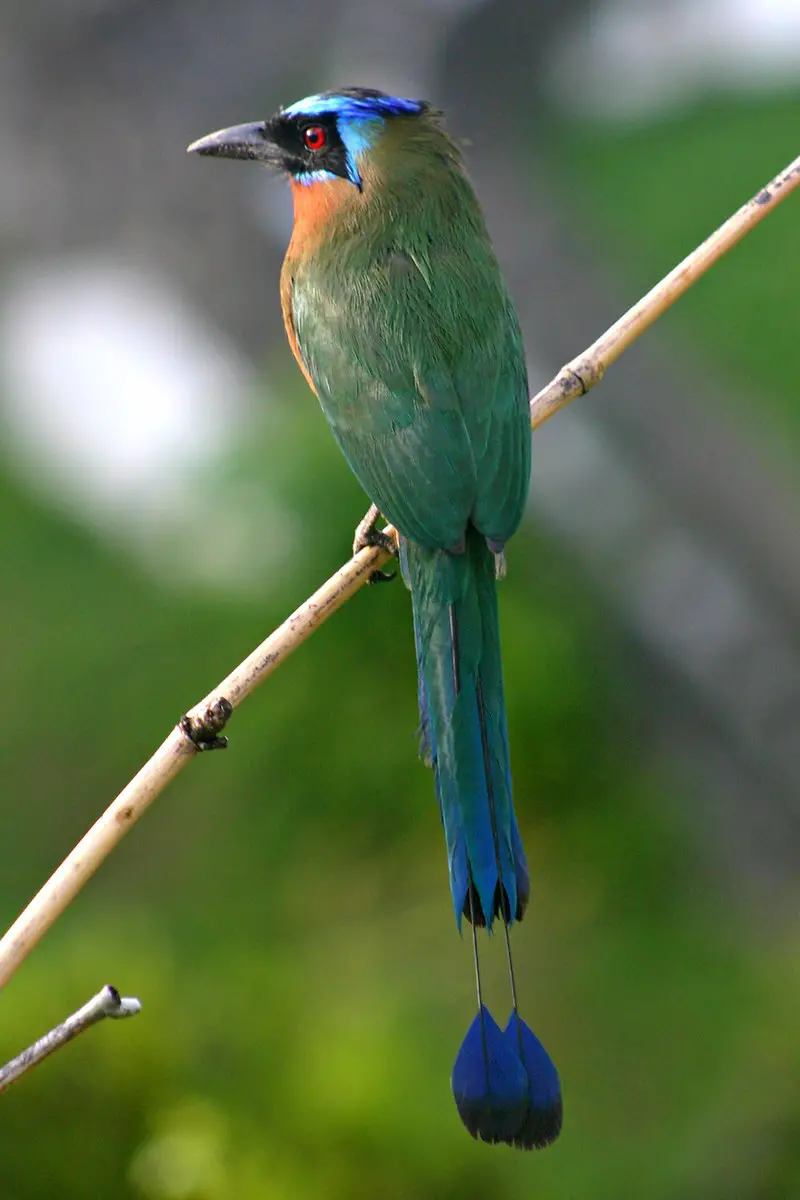
Motmots are a family of birds in the order Coraciiformes, known for their vibrant plumage and relatively heavy bills. They inhabit woodlands or forests across the Neotropics and can range in size from small to large.
The most distinctive feature of motmot species is their long tail feathers that some have adorned with unique patterns like eyespots.
Their diet consists mainly of insects but they will also eat smaller vertebrates such as lizards, frogs and fish.
Motmots are active during daylight hours where they can be seen perching on branches along forest edges or flitting through trees hunting prey.
These beautiful creatures have become an important part of many peoples’ lives throughout Latin America due to them being considered symbols of good luck by local cultures.
Scientific classification:
| Kingdom | Animalia |
| Phylum | Chordata |
| Class | Aves |
| Order | Coraciiformes |
| Family | Momotidae GR Gray, 1840 |
2. Turquoise-Browed Motmot
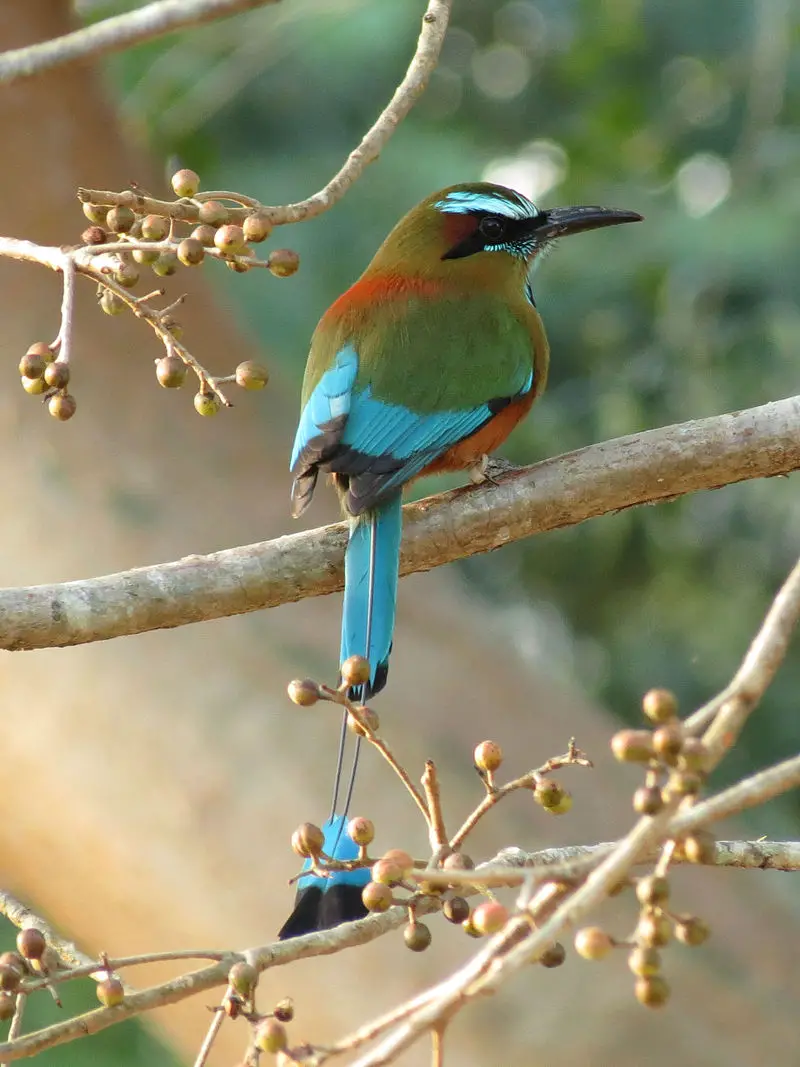
The turquoise-browed motmot is a beautiful bird of the Momotidae family. It can be found in central America from south east Mexico to Costa Rica, where it is common and not considered threatened.
This species enjoys living in open habitats such as forest edges, gallery forests or scrubland.
They are more visible than other Motmots due to their large size and bright colouration which includes an iridescent blue back and yellowish chest with black spots on its throat feathers.
Turquoise-browed motmots possess unique features that set them apart; they have two long tail feathers which dangle behind them while flying like streamers, hence earning themselves the nickname “the flying orchestra”.
In addition they are known for their loud calls during mating season – making them easily recognizable.
Scientific classification:
| Kingdom | Animalia |
| Phylum | Chordata |
| Class | Aves |
| Order | Coraciiformes |
| Family | Momotidae |
| Genus | Eumomota P.L. Sclater, 1858 |
| Species | E. superciliosa |
3. Black-Bellied Whistling Duck
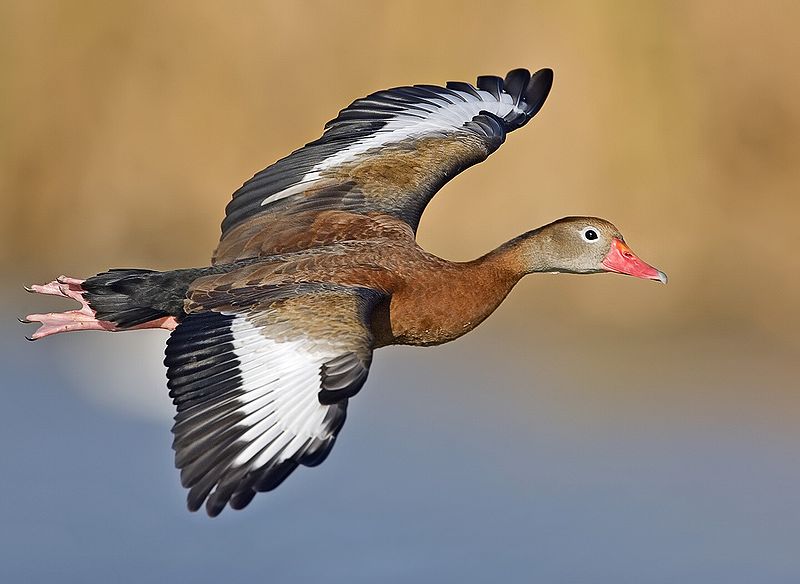
The Black-bellied whistling duck is a unique species of bird that can be found in the southern United States, Mexico, Central and South America. This small waterfowl has distinct black plumage on its belly which gives it its name.
Its call is also distinctive as it makes high pitched whistles to communicate with other members of its flock.
It prefers wetland habitats such as marshes, ponds and lakes where they feed on seeds and aquatic plants like wild rice or pondweed.
During breeding season these birds form monogamous pairs nesting in trees near bodies of water.
They are migratory birds but some may remain year round depending upon local climate conditions making them relatively common sights in certain areas during winter months when most other ducks have migrated further south for warmer weather.
Scientific classification:
| Kingdom | Animalia |
| Phylum | Chordata |
| Class | Aves |
| Order | Anseriformes |
| Family | Anatidae |
| Genus | Dendrocygna |
| Species | D. autumnalis |
Also Featured In: Birds You’ll Find in South Texas , Birds that Live around Central Florida
4. Grebes
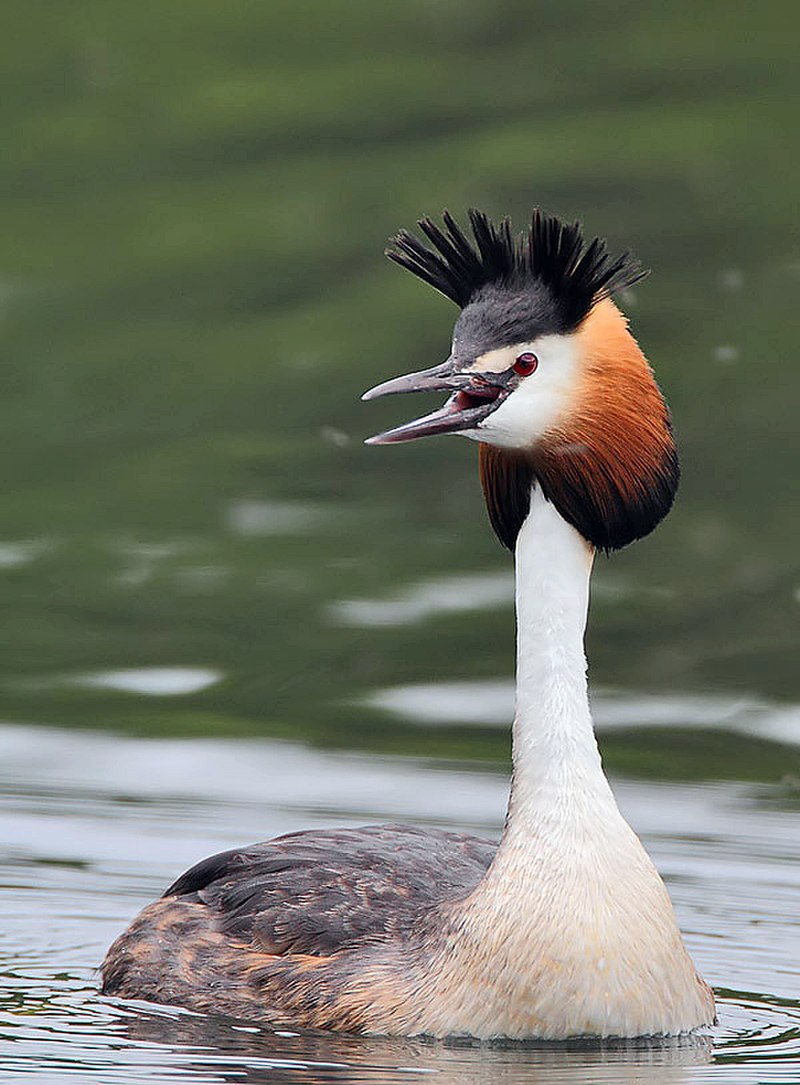
Grebes are a type of diving bird found in freshwater habitats around the world. They belong to the order Podicipediformes and have 22 species that exist across six genera.
Some species can also be found in marine environments during their migration or winter season, and some even live flightless lives on stable lakes.
Grebes vary greatly between regions; for example, they range from 4-32 inches long with anywhere from 8-30 ounces of weight depending on which species it is.
Their plumage may be black, browns/grays or whites but usually consist of bright colors such as yellows, blues and greens while underwater they use these feathers to help them streamline through the water quickly.
Scientific classification:
| Kingdom | Animalia |
| Phylum | Chordata |
| Class | Aves |
| Clade | Neoaves |
| Clade | Mirandornithes |
| Order | Podicipediformes Fürbringer, 1888 |
| Family | Podicipedidae Bonaparte, 1831 |
5. Pinnated Bittern
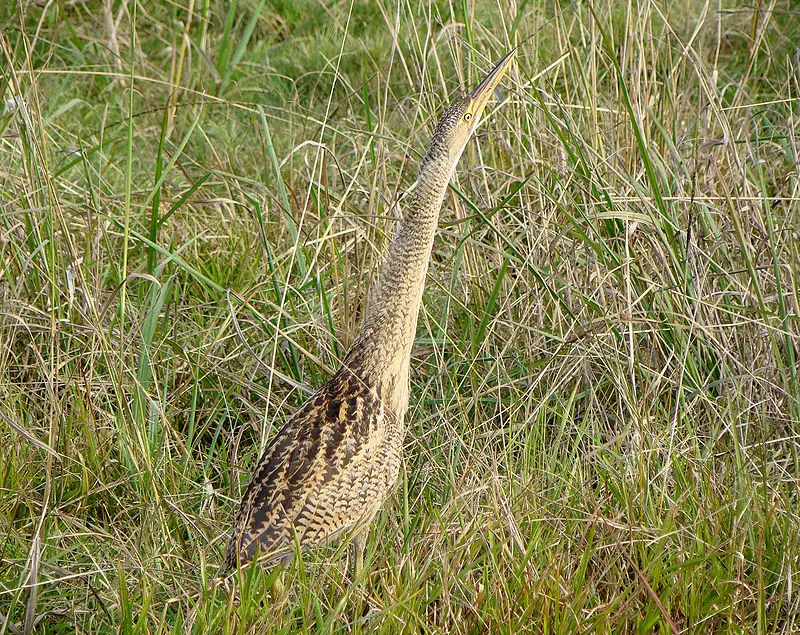
The Pinnated Bittern is a large member of the heron family, found in tropical New World regions. It’s mostly buffy-brown and cryptically patterned with an elusive nature that makes it rarely seen.
Its habitat consists of shallow wetlands including marshes, swamps and lake shores where it feeds on amphibians, reptiles and insects such as dragonflies.
The species can become quite vocal during breeding season which includes various low growls emitted from its hiding spot amongst reeds or tall grasses to attract mates or warn intruders.
Despite being widespread, there still remains much unknown about this secretive bird due to difficulty studying them in their natural environment making conservation efforts challenging yet essential for the future survival of this unique species.
Scientific classification:
| Kingdom | Animalia |
| Phylum | Chordata |
| Class | Aves |
| Order | Pelecaniformes |
| Family | Ardeidae |
| Genus | Botaurus |
| Species | B. pinnatus |
6. Long-Tailed Manakin
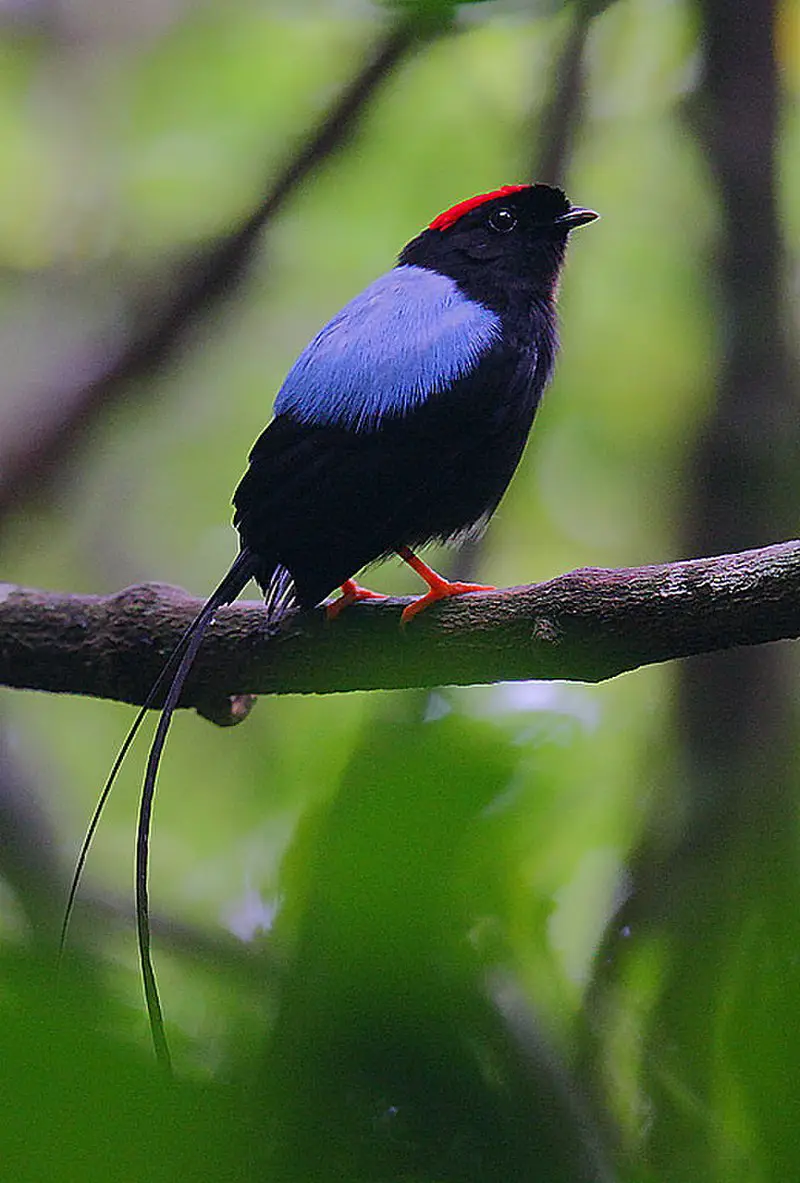
The Long-tailed Manakin is a small bird native to Central America. It inhabits both wet and dry tropical and subtropical forests, usually measuring just 10 centimetres (4 inches) long.
The male has striking black plumage with vivid blue back feathers, as well as a red crown atop its head.
Its most remarkable feature however are the two central tail feathers which have been greatly elongated over time – giving it an unmistakable silhouette in flight.
Females and juveniles display olive green colouring instead of the males’ more vibrant palette making for interesting contrast amongst family groups within these lush habitats.
Scientific classification:
| Kingdom | Animalia |
| Phylum | Chordata |
| Class | Aves |
| Order | Passeriformes |
| Family | Pipridae |
| Genus | Chiroxiphia |
| Species | C. linearis |
7. Falcons And Caracaras
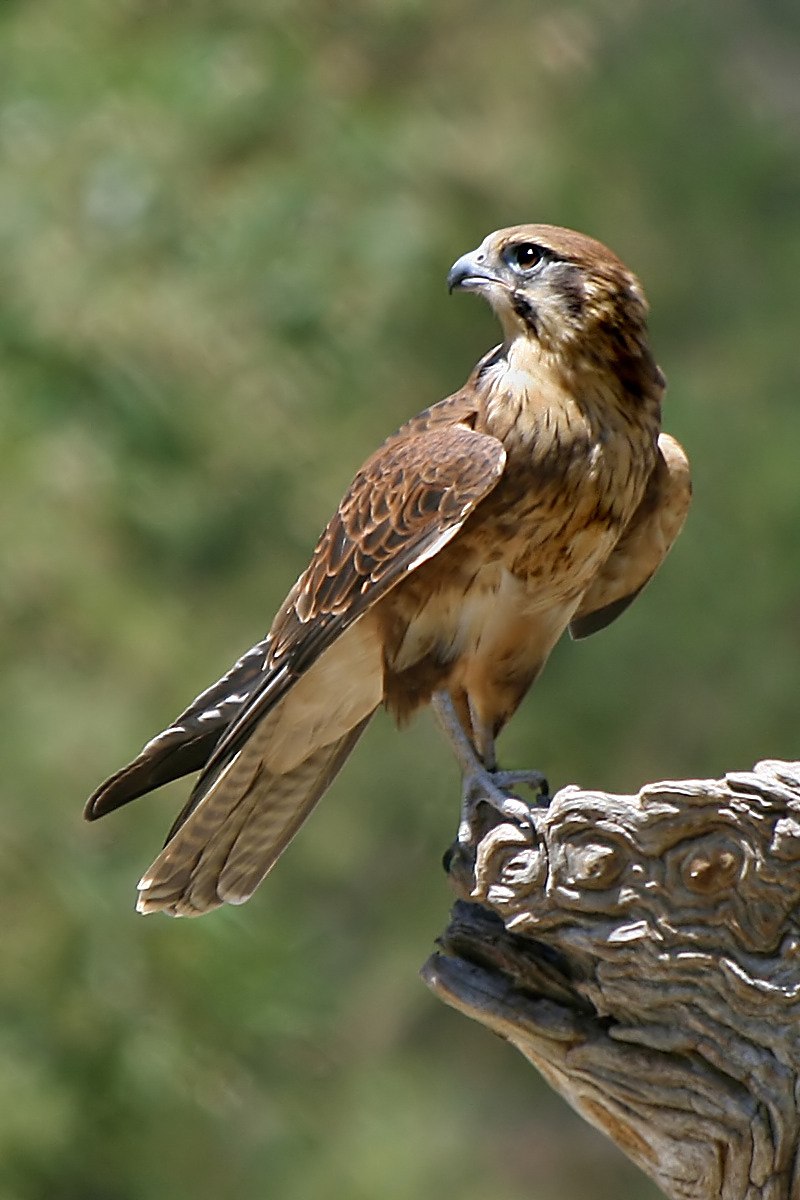
Falcons and caracaras are birds of prey that belong to the family Falconidae. They have impressive sharp talons, hooked beaks and keen eyesight which makes them excellent hunters.
Falcons can reach speeds up to 200 mph when diving for their prey while caracaras use a combination of running and flying to hunt small mammals such as rabbits or rats.
Both falcons and caracaras live in various areas around the world from grasslands, deserts, forests, wetlands or even urban areas where they nest on cliffs or tall buildings.
The diet mainly consists insects but also includes larger animals like reptiles or other birds which they catch by surprise with fast dives out of the sky.
Scientific classification:
| Kingdom | Animalia |
| Phylum | Chordata |
| Class | Aves |
| Order | Falconiformes |
| Family | Falconidae Leach, 1820 |
8. Jacanas
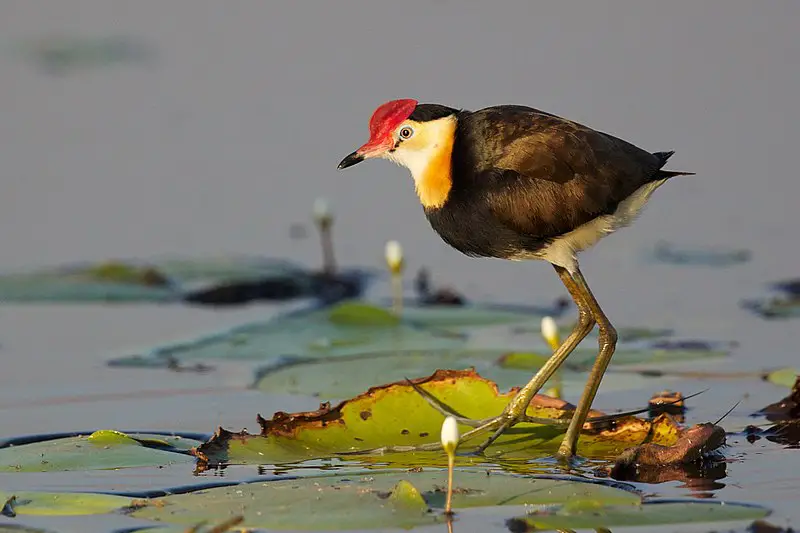
Jacanas are tropical waders belonging to the Jacanidae family. They have distinctive elongated toes and toenails which help them forage on floating or semi-emergent aquatic vegetation.
This adaptation gives them their nickname “Jesus birds” as they seem to be able to walk on water.
The female jacanas are also unique amongst bird species in that they take charge of nest building, incubation and caring for young while males perform courtship displays.
These unusual birds can be found throughout the world’s tropical regions where they inhabit wetlands such as swamps, marshes and shallow lakes with lily pads.
With a wide variety range due their special adaptations these beautiful creatures will surely continue living life at ease around our planet’s warmest waters.
Scientific classification:
| Kingdom | Animalia |
| Phylum | Chordata |
| Class | Aves |
| Order | Charadriiformes |
| Suborder | Thinocori |
| Family | Jacanidae Stejneger, 1885 |
9. Threskiornithidae
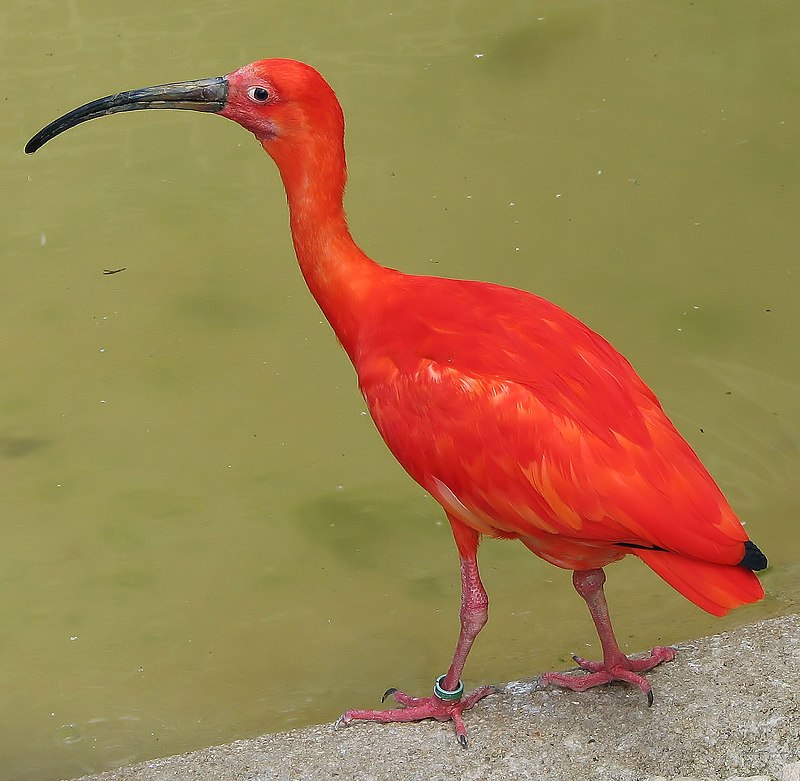
Threskiornithidae is a family of large wading birds which includes 36 species. These birds are traditionally divided into two subfamilies – the ibises and the spoonbills.
However, recent genetic analysis has shown that spoonbills actually belong to Old World ibis group, while New World ibises form an early offshoot from this lineage.
Threskiornithidse members have long curved beaks with serrated edges used for catching fish in shallow water or mudflats, as well as other aquatic invertebrates like crustaceans and mollusks.
They also feed on plant matter such as grains and seeds found close to wetlands areas where they live.
This diverse diet makes them important scavengers in their ecosystems, helping maintain healthy populations of native wildlife by controlling insect numbers and dispersing energy-rich seeds throughout wetland habitats.
Scientific classification:
| Kingdom | Animalia |
| Phylum | Chordata |
| Class | Aves |
| Order | Pelecaniformes |
| Suborder | Ardei |
| Family | Threskiornithidae Richmond, 1917 |
10. Plovers

Plovers are a family of around 64-68 species of ground-dwelling birds, commonly found in open country such as fields, meadows and tundras.
They have short bills with webbed feet to help them forage through mud or shallow water.
Plover plumage is usually mottled brown though some species may have brighter colors on the head and wings.
These birds feed mainly on insects but can also eat small crustaceans and worms.
Plovers breed during springtime when they dig holes in sandy or pebbled beaches to lay their eggs which hatch after about 3 weeks incubation period.
They use distraction display behaviour by pretending an injury to the predators away from their nests if needed for protecting their young ones.
Scientific classification:
| Kingdom | Animalia |
| Phylum | Chordata |
| Class | Aves |
| Order | Charadriiformes |
| Family | Charadriidae Leach, 1820 |
11. Stilts And Avocets
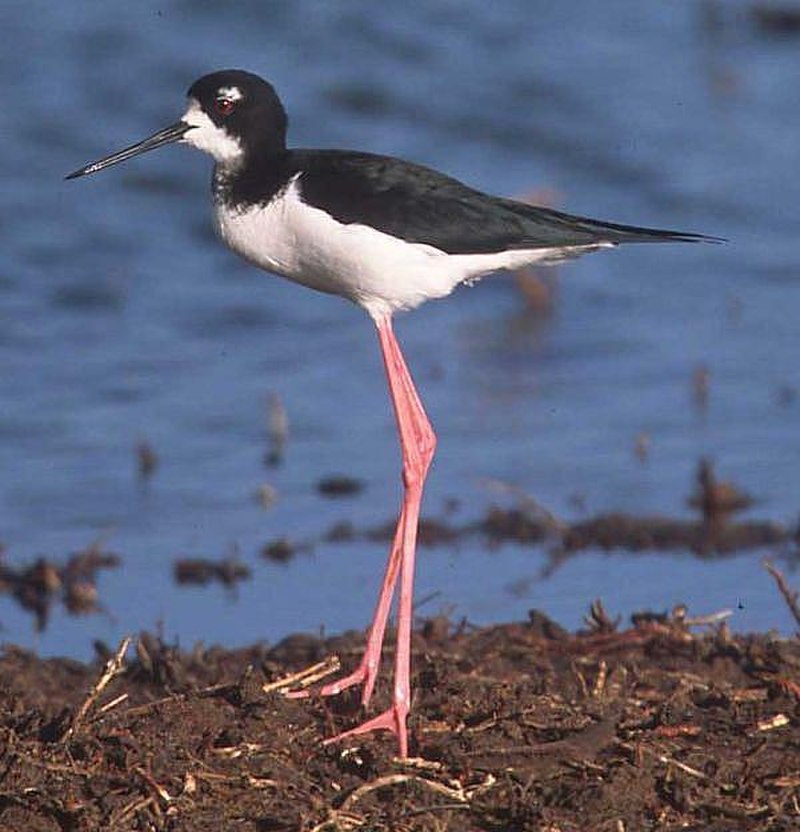
Stilts and avocets are two distinct groups of birds belonging to the family Recurvirostridae. They range in length from 30-46 cm (12-18 inches) and weigh between 140 – 435 g (4.9 – 15.3 ounces).
Males usually have slightly larger bodies than females, with long thin legs, necks and bills.
Avocet bills curve upwards uniquely while stilt beaks remain straight most times.
These wading birds live mainly near shorelines or wetlands where they feed on aquatic invertebrates like brine shrimp, insects etc., occasionally supplementing their diet with seeds or small fish too.
Stilts also inhabit open fields in search of food sources such as earthworms or grasshoppers during the non-breeding season.
Both groups migrate over large distances for warmer weathers when it gets cold outside.
Scientific classification:
| Kingdom | Animalia |
| Phylum | Chordata |
| Class | Aves |
| Order | Charadriiformes |
| Suborder | Charadrii |
| Family | Recurvirostridae Bonaparte, 1854 |
12. Resplendent Quetzal
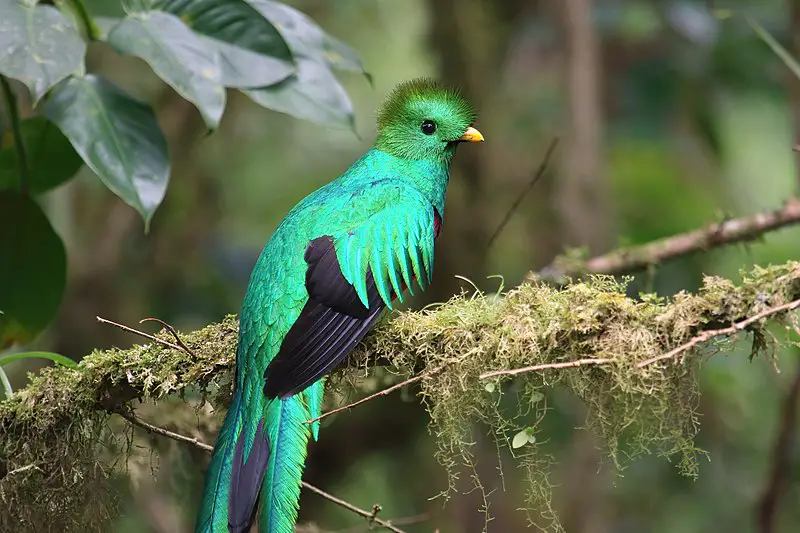
The resplendent quetzal is a beautiful and vibrant bird found in Central America. It belongs to the family Trogonidae, which includes birds like trogons and motmots.
This species of quetzal has two recognized subspecies: P. mocinno and P. costaricensis, both living in tropical forests such as montane cloud forests.
They are omnivores, typically eating fruits from various plants along with insects, lizards or eggs when available.
The male’s plumage is particularly striking with its multi-colored feathers ranging from green to blue to red that gives it its namesake “resplendence” look.
This coloration comes at a price for males because their bright colors make them more visible predators than females who have duller brown coloring instead.
Regardless of gender though all members of this species demonstrate great agility in flight due to their long tails which help stabilize them even through tight turns.
Scientific classification:
| Kingdom | Animalia |
| Phylum | Chordata |
| Class | Aves |
| Order | Trogoniformes |
| Family | Trogonidae |
| Genus | Pharomachrus |
| Species | P. mocinno |
13. Stub-Tailed Spadebill
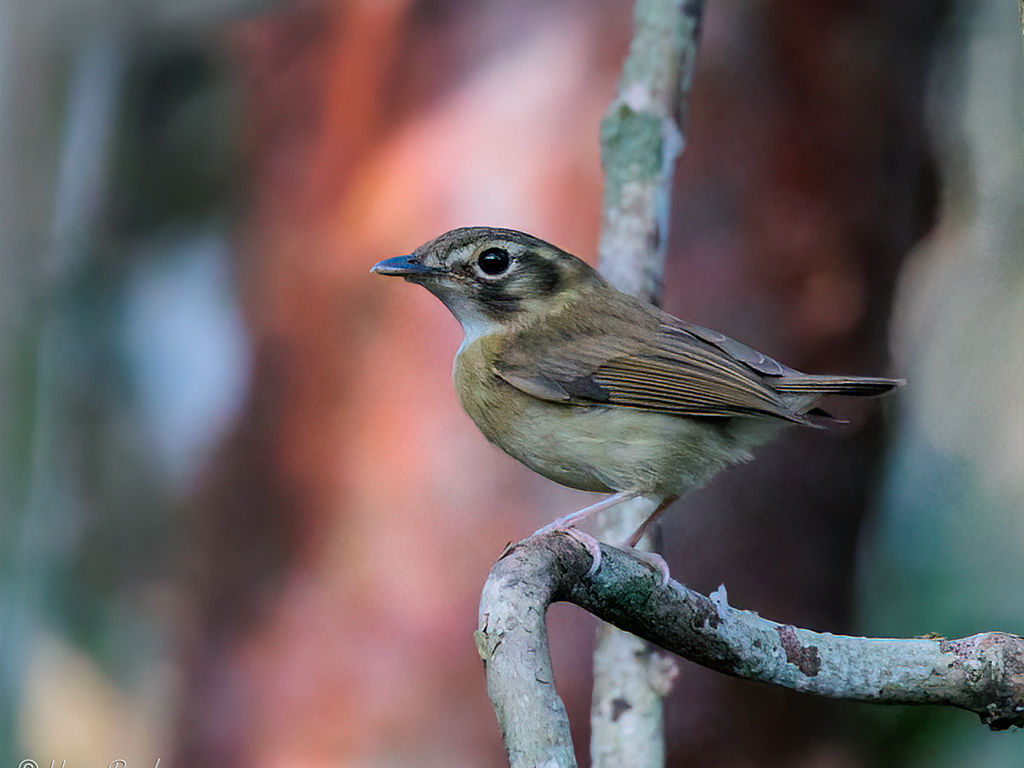
The Stub-tailed spadebill is a passerine bird in the Tyrannidae family, native to Central America.
It inhabits tropical dry rainforests or moist lowlands and was originally thought to be the same species as Platyrinchus mystaceus, but was reclassified after further study.
This small bird typically grows up to 12 cm long with olive hues on its upperparts and yellowish rufous spotted underparts.
Its most distinctive feature is its short tail which lacks any elongated feathers like many other birds of similar size have.
The stub-tailed spadebill feeds mainly insects it catches while searching through foliage by gleaning or hovering over branches near ground level looking for prey items such as caterpillars and beetles before capturing them with their bill.
Scientific classification:
| Kingdom | Animalia |
| Phylum | Chordata |
| Class | Aves |
| Order | Passeriformes |
| Family | Tyrannidae |
| Genus | Platyrinchus |
| Species | P. cancrominus |
14. Blue-And-White Mockingbird
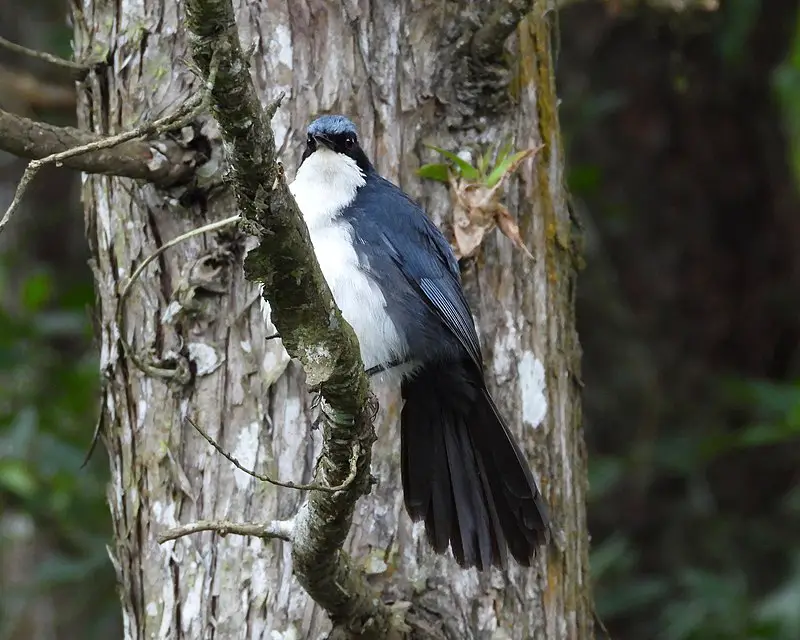
The Blue-and-white Mockingbird is a species of bird found in El Salvador, Guatemala, Honduras and Mexico. It has an average length between 9.5 to 11 inches long with a mean mass range from 27 – 50 grams.
The two birds which belong to the same genus are the only ones of their kind; they can be distinguished by slight differences in size and colouration – the blue mockingbird having more greyish tones than its whitish counterpart.
They inhabit open woodlands and tropical dry forests mainly near water sources such as rivers or streams where they feed on insects, fruits and small vertebrates like lizards or amphibians.
With its beautiful song it often heralds dawn while perched atop trees making them easy to spot during early morning hours.
Scientific classification:
| Kingdom | Animalia |
| Phylum | Chordata |
| Class | Aves |
| Order | Passeriformes |
| Family | Mimidae |
| Genus | Melanotis |
| Species | M. hypoleucus |
15. Violet Sabrewing
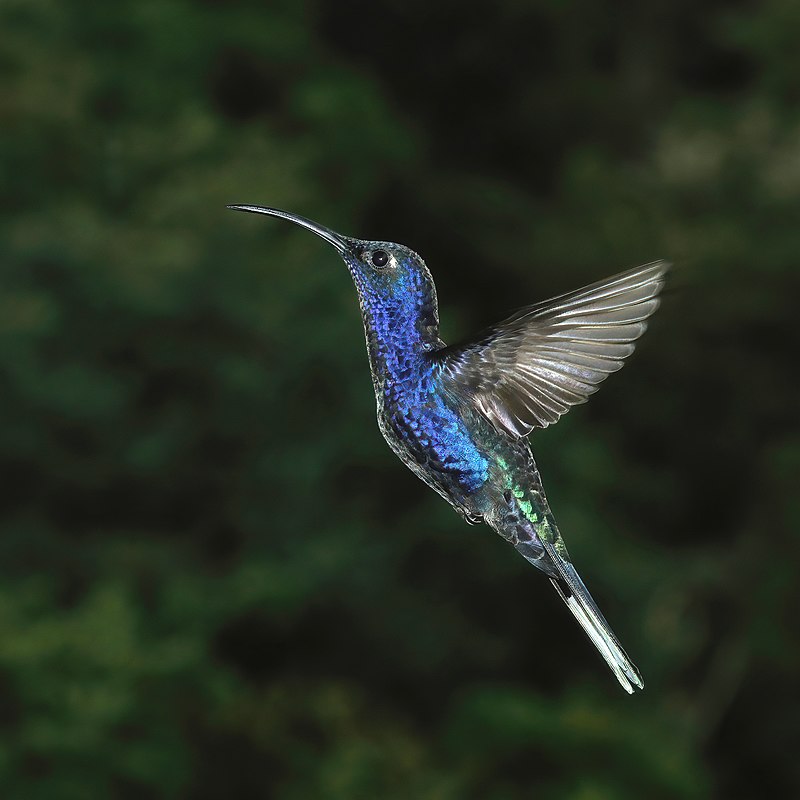
The Violet Sabrewing is the largest hummingbird in Mexico and Central America, with a length of 13-15cm (5.1 to 5.9in).
It belongs to the Trochilini tribe of Emeralds subfamily (Trochilinae), and has two distinct species – C. h. hemileucurus and C. h.. mellitus – found from Mexico to Panama.
This colorful bird typically sports an iridescent violet throat, shining green back, white breast as well as black head, tail feathers and beak tip; all adding up to its stunning beauty.
Its diet consists mainly nectar it collects from flowers by hovering around them like typical hummingbirds do but also feeds on small insects for much needed protein intake.
The Violet Sabrewing is known for their long migrations across great distances just so they can find suitable places where food sources are abundant during different seasons throughout the year.
Scientific classification:
| Kingdom | Animalia |
| Phylum | Chordata |
| Class | Aves |
| Order | Apodiformes |
| Family | Trochilidae |
| Genus | Campylopterus |
| Species | C. hemileucurus |
16. Cinnamon Hummingbird
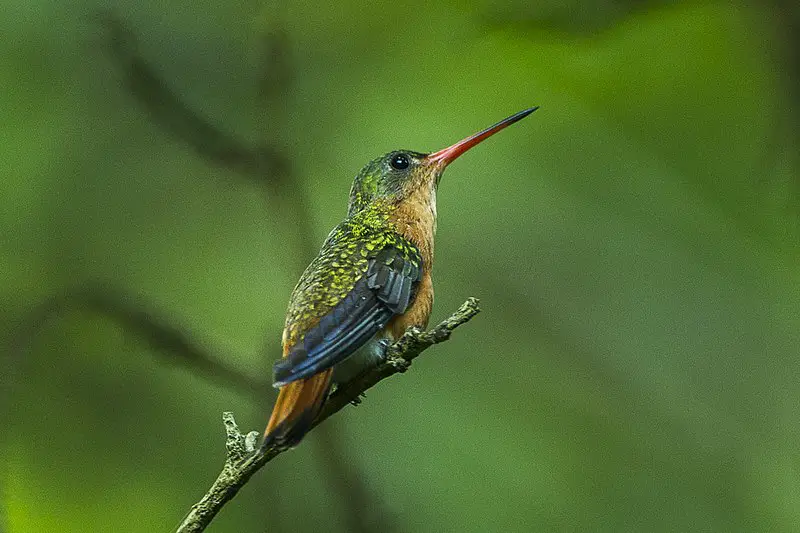
The Cinnamon Hummingbird is a species of hummingbird found in the ‘emeralds’, tribe Trochilini of subfamily Trochilinae.
It can be seen from Mexico to Costa Rica and was officially documented by French naturalist René Lesson in 1842 near Acapulco, Mexico.
The tiny bird measures around four inches long and has a bright metallic green back with orange-brown on its throat, chest and belly. Its wings are short but strong enough for them to beat up to 80 times per second.
They feed mainly on nectar from flowers as well as small insects such as spiders or ants which they capture mid-flight.
These birds have adapted perfectly for life among flowering plants; their curved bills enable them to reach deep into flowers while their tongues help suck out sweet nectar quickly so that they can move onto the next flower.
Scientific classification:
| Kingdom | Animalia |
| Phylum | Chordata |
| Class | Aves |
| Order | Apodiformes |
| Family | Trochilidae |
| Genus | Amazilia |
| Species | A. rutila |
17. Blue-Throated Goldentail
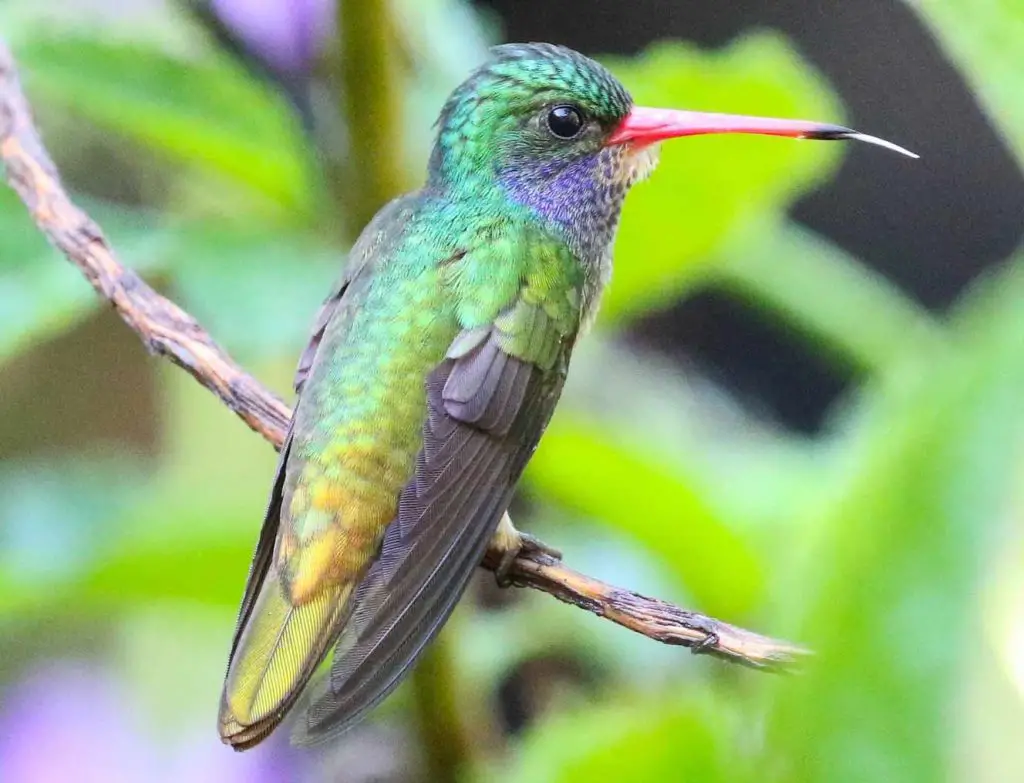
The Blue-throated Goldentail is a beautiful species of hummingbird found in Central America and Mexico.
This bird has an iridescent blue throat, dark green upper parts, white underparts with metalic sheen, and bright yellow tail feathers making it one of the most stunningly coloured birds around.
It can be seen flitting among trees looking for insects to eat or drinking nectar from flowers while hovering midair with its wings beating at incredible speeds.
Its natural habitats are lowland tropical forests but they have adapted to heavily degraded former forest areas too.
The male goldentails use their vibrant colours as part of their courtship display which involves song flights where they rise up into the air before plunging back down again showing off their spectacular plumage all along.
Scientific classification:
| Kingdom | Animalia |
| Phylum | Chordata |
| Class | Aves |
| Order | Apodiformes |
| Family | Trochilidae |
| Genus | Chlorestes |
| Species | C. eliciae |
18. King Vulture
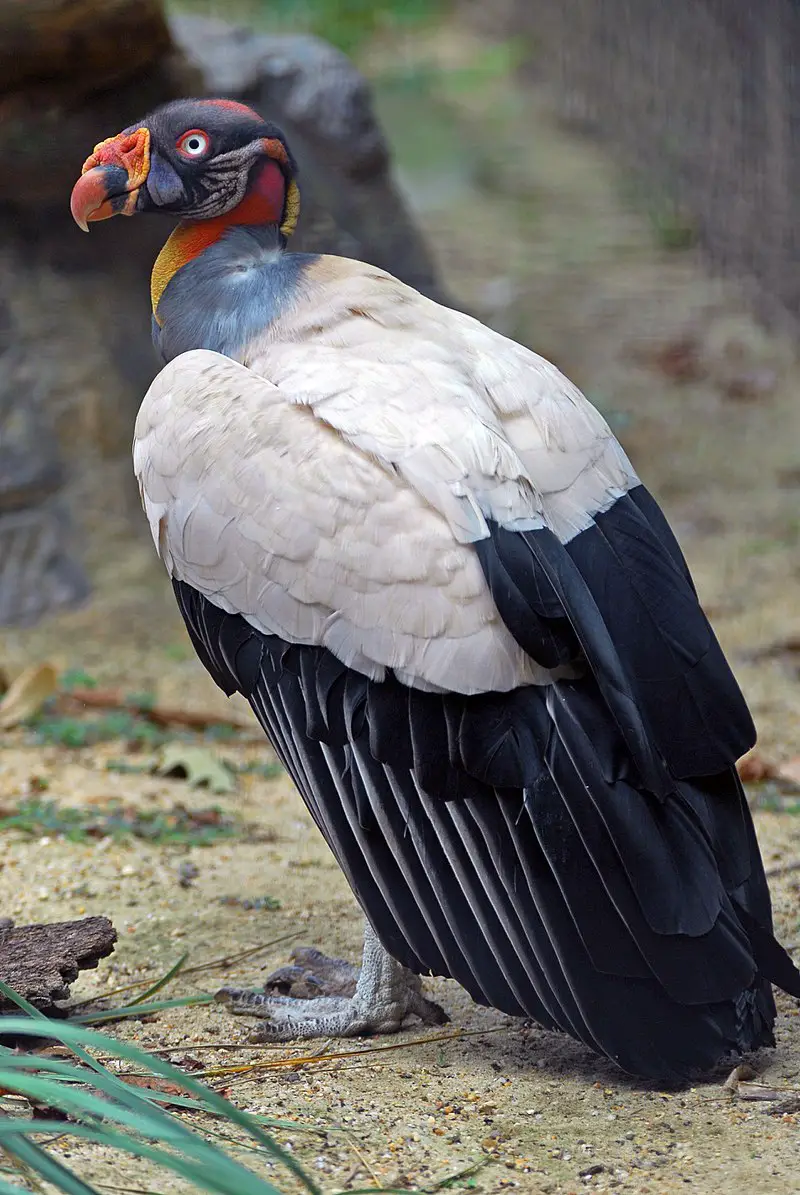
The King Vulture is a majestic bird found in Central and South America. It has striking white plumage with black accents, and its head is topped by a bright yellow crest.
With long wingspan of up to 4 feet, this vulture soars gracefully through the sky. Its large size allows it to dominate other scavenging birds at carcasses; although not as powerful as some raptors, the king vulture will protect what belongs to it fiercely.
The diet of these elegant creatures consists mainly of carrion such as dead mammals or fish that they spot from far away using their excellent vision.
They also occasionally eat eggs or nestlings if food is scarce during dry seasons.
This fascinating species plays an important role in keeping ecosystems healthy by removing dead animals from landscapes quickly before diseases spread further into populations.
Scientific classification:
| Kingdom | Animalia |
| Phylum | Chordata |
| Class | Aves |
| Order | Accipitriformes |
| Family | Cathartidae |
| Genus | Sarcoramphus |
| Species | S. papa |
19. Tody Motmot
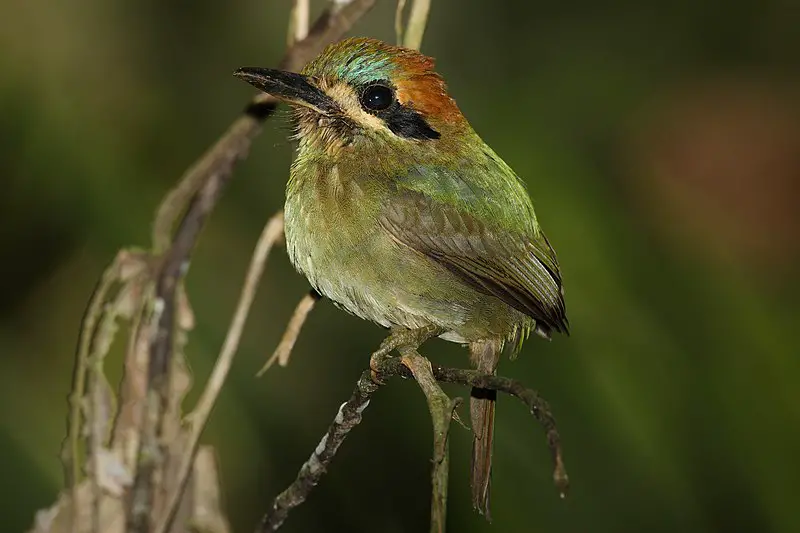
The Tody Motmot is a species of passerine bird belonging to the family Momotidae. It inhabits parts of Central America, ranging from Belize to Panama.
Distinguished by its bright colors and unique tail feathers, this bird stands out among its feathered friends in the tropical forest canopy.
Its most notable feature are two long central tail feathers with green iridescence which can be spread fan-like or kept close together for courtship displays or protection against predators.
The three subspecies differ slightly in size and plumage coloration patterns; however all share short rounded wings adapted for maneuvering through dense vegetation as they search for insects, small reptiles and amphibians on which they feed during their daily activities.
So if you ever find yourself exploring these lush rainforests take some time to observe one of nature’s true gems -the beautiful Tody Motmot.
Scientific classification:
| Kingdom | Animalia |
| Phylum | Chordata |
| Class | Aves |
| Order | Coraciiformes |
| Family | Momotidae |
| Genus | Hylomanes Lichtenstein, MHC, 1839 |
| Species | H. momotula |
20. Golden-Fronted Woodpecker
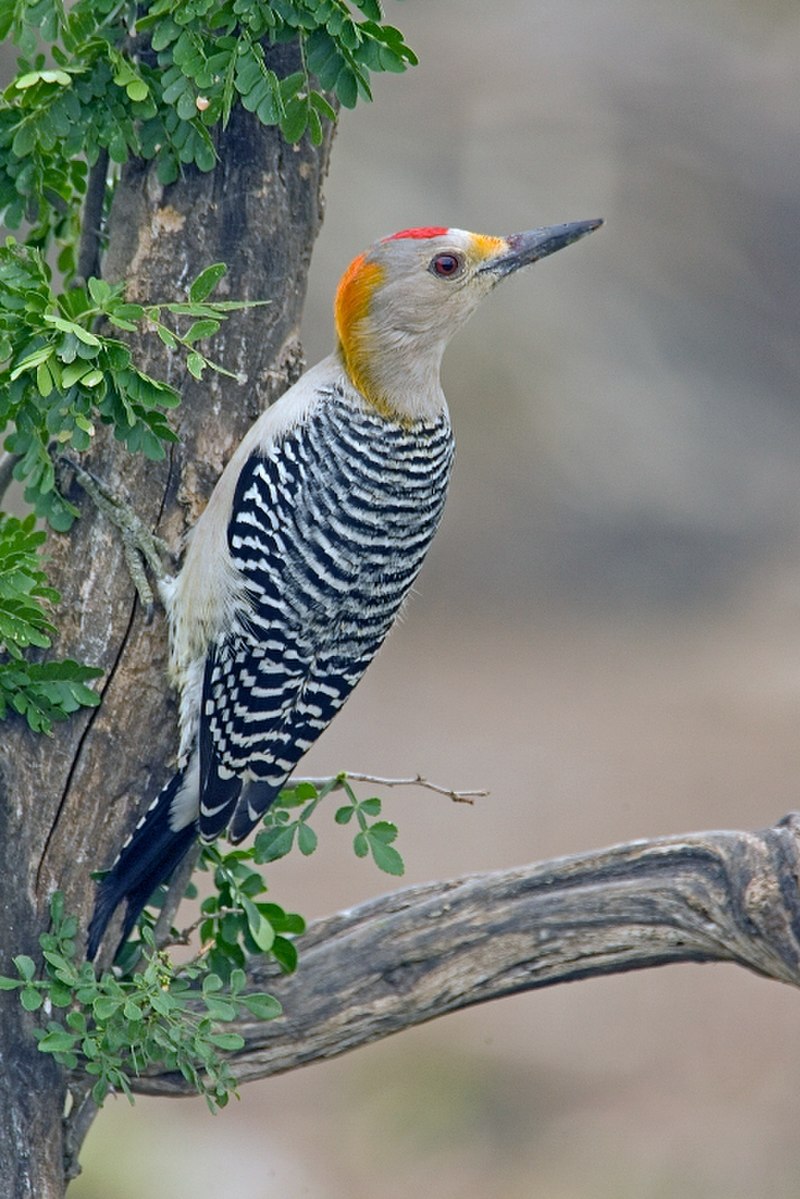
The golden-fronted woodpecker is an attractive species that inhabits mesquite, riparian woodlands and tropical rainforests across the southern United States, Mexico, Belize Guatemala El Salvador Honduras and northern Nicaragua.
It has a unique appearance with its yellow forehead patch contrasting against its grey back feathers.
These birds eat insects as well as fruits of many trees including cactus fruit in some areas.
They are known to make nests in cavities they excavate from dead or dying trees or utility poles which helps disperse essential nutrients into the ecosystem.
Their loud calls can be heard during breeding season providing bird watchers with a memorable experience.
Scientific classification:
| Kingdom | Animalia |
| Phylum | Chordata |
| Class | Aves |
| Order | Piciformes |
| Family | Picidae |
| Genus | Melanerpes |
| Species | M. aurifrons |
Also Featured In: Birds You’ll Find in the Rio Grande Valley, Native Birds in Lower Rio Grande Valley
21. Lineated Woodpecker
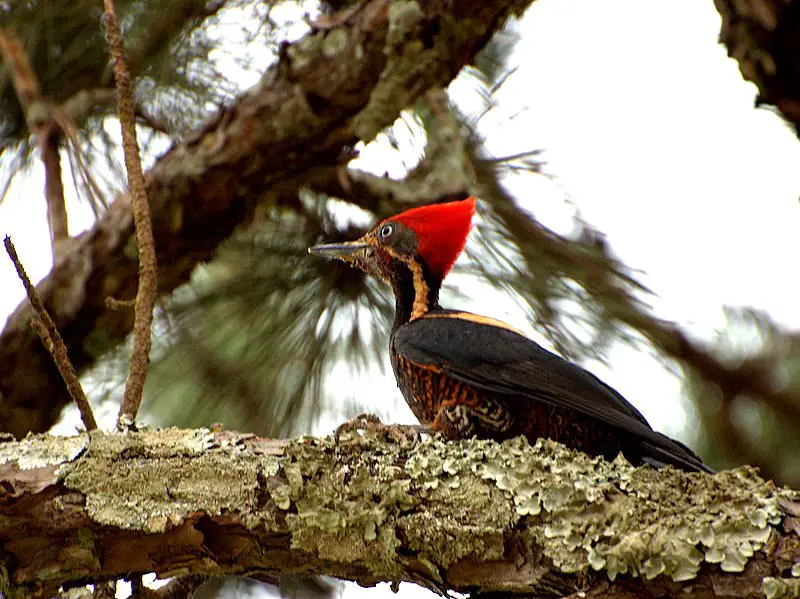
The Lineated Woodpecker is a large bird found in Mexico, Argentina and the Caribbean. It was first described by French zoologist Mathurin Jacques Brisson in 1760 with the name Le pic noir.
This species has black upperparts, wings and tail with white stripes running along its back and head; it also features red marks on its forehead as well as on both sides of its neck.
Its underparts are mostly greyish-white while its bill is yellowish-black and slightly hooked at the end.
These birds feed mainly on insects but can sometimes be seen foraging for fruits or tree sap too.
They nest inside cavities usually made from dead trees which they excavate themselves using their strong bills perfect for drilling into woody material easily.
All in all, these beautiful birds make an interesting addition to any backyard garden.
Scientific classification:
| Kingdom | Animalia |
| Phylum | Chordata |
| Class | Aves |
| Order | Piciformes |
| Family | Picidae |
| Genus | Dryocopus |
| Species | D. lineatus |
22. Ornate Hawk-Eagle
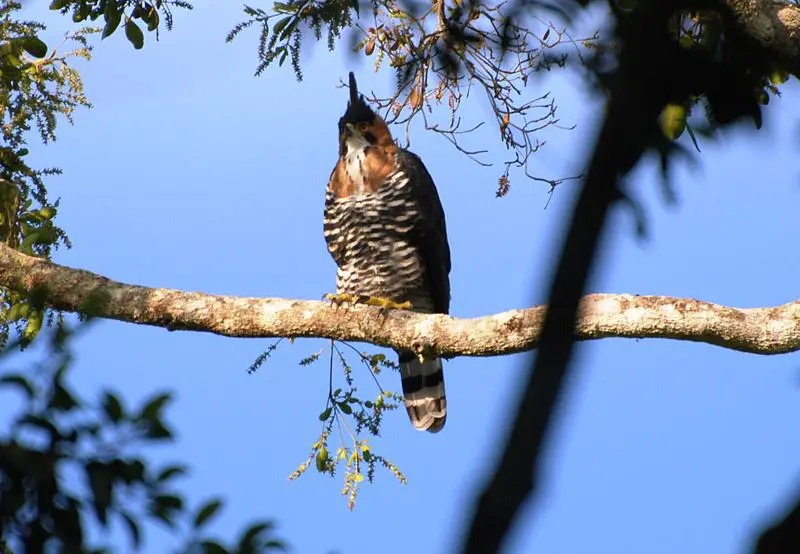
The Ornate Hawk-Eagle is a magnificent bird of prey that hails from the tropical Americas. With its striking mocha brown and white feathers, this eagle stands out among other birds in its family Accipitridae.
Male specimens are especially stunning with bold cream and black stripes along their back as well as a unique crest on top of their heads.
They have powerful talons which they use to hunt small mammals like rabbits or monkeys, but also feed upon smaller birds and reptiles found near forests or marshes where they typically reside.
This majestic raptor may sometimes be seen soaring gracefully through the sky above its habitats, showing off for onlookers below.
Scientific classification:
| Kingdom | Animalia |
| Phylum | Chordata |
| Class | Aves |
| Order | Accipitriformes |
| Family | Accipitridae |
| Genus | Spizaetus |
| Species | S. ornatus |
23. Altamira Oriole

The Altamira oriole is a New World species found in subtropical lowlands from the Mexican Gulf Coast to northern Central America, and inland as well. It was only recently spotted in southern Texas since 1939.
This bird stands out among its genus for being the largest at 25cm (9.8in) and 56g (2oz). Its preferred habitat is open woodland where it builds nests made of plant fibers and animal hair lined with grasses or mosses.
Adults have black heads, wings and tails while their chests are orange-yellow with white markings on each side; juveniles display more yellowish plumage than adults do.
They feed mainly on insects but also occasionally eat fruits or nectar depending on what’s available during certain seasons.
Scientific classification:
| Kingdom | Animalia |
| Phylum | Chordata |
| Class | Aves |
| Order | Passeriformes |
| Family | Icteridae |
| Genus | Icterus |
| Species | I. gularis |
Also Featured In: Yellow Birds that Live in Yucatan, Birds that Live in Tabasco
24. Blue Bunting
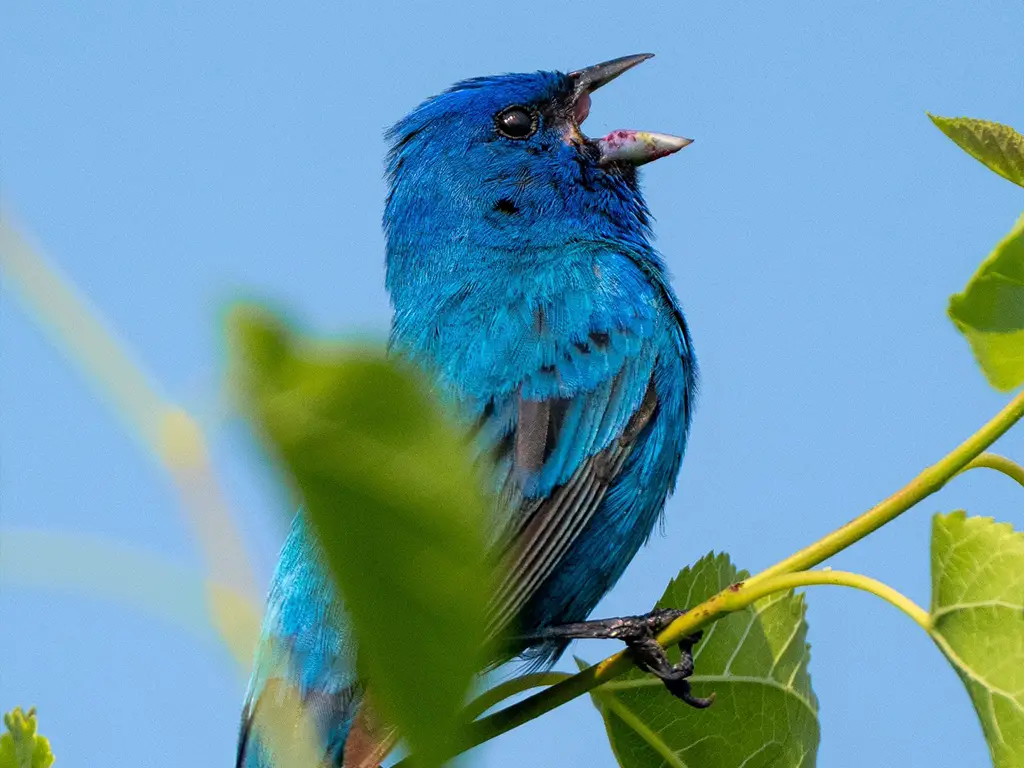
The Blue Bunting (Cyanocompsa parellina) is a colorful species of passerine bird belonging to the family Cardinalidae. It can be found in Belize, El Salvador, Guatemala, Honduras, Mexico and Nicaragua.
French naturalist Charles Lucien Bonaparte first described it as Passerina Parellina in 1850 before German ornithologist Jean Cabanis defined its genus Cyanoloxia.
The male has striking blue feathers with dark brown wings and tail feathers while females are dull gray-brown overall but still show some blue on their upper part.
They mainly inhabit tropical woodlands where they forage for insects among low vegetation or even near human settlements.
As such they make an interesting addition to any backyard garden and will often visit feeders if provided with food sources like sunflower seeds or suet cakes.
Scientific classification:
| Kingdom | Animalia |
| Phylum | Chordata |
| Class | Aves |
| Order | Passeriformes |
| Family | Cardinalidae |
| Genus | Cyanocompsa Cabanis, 1861 |
| Species | C. parellina |
25. Grey-Collared Becard
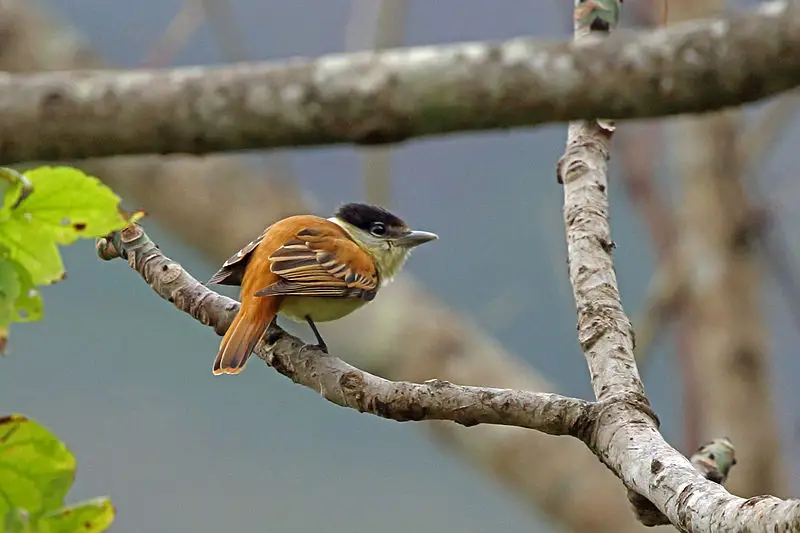
The Grey-collared Becard (Pachyramphus major) is a member of the Tityridae family. It inhabits subtropical or tropical dry forests and can be found in El Salvador, Guatemala, Honduras, Mexico, Nicaragua and Belize.
The bird is distinctive due to its grey collar which surrounds its neck area; other features include white cheeks with black stripes running across them.
Its diet consists mainly of fruits such as figs and berries supplemented by insects from time to time.
As many birds are facing threats from deforestation it has been classified as Near Threatened on IUCN’s Red List since 2016 due to habitat loss caused by agricultural expansion for crop production resulting in fragmentation of their habitats leaving these birds with fewer resources needed for survival .
Scientific classification:
| Kingdom | Animalia |
| Phylum | Chordata |
| Class | Aves |
| Order | Passeriformes |
| Family | Tityridae |
| Genus | Pachyramphus |
| Species | P. major |
26. Black-Headed Saltator
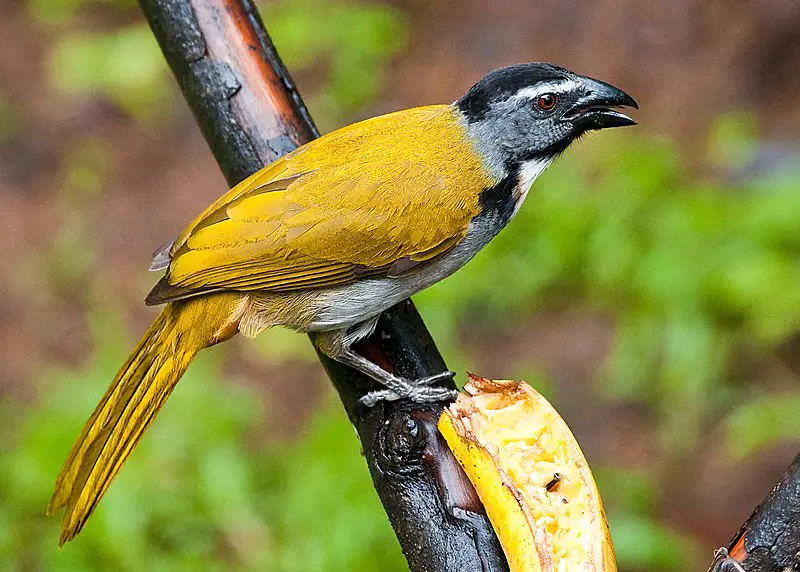
The Black-headed Saltator is a small bird found in Central Mexico to Eastern Panama. It has an average length of 24cm and weighs 85g.
Its head is slate grey with a whitish supercilium, upperparts are yellowish green and underparts pale grey; its throat is white edged with black.
The bill of the saltator is thick, conical and pinkish at the base. This species feeds mainly on seeds but will also take insects when available during breeding season.
During nonbreeding periods they form flocks that move around looking for food sources such as grains or weed seedheads along roadsides or open fields near forests edges..
They nest in bushes building cup shaped nests lined with grasses which they use again each year if not disturbed by predators like snakes or cats.
Scientific classification:
| Kingdom | Animalia |
| Phylum | Chordata |
| Class | Aves |
| Order | Passeriformes |
| Family | Thraupidae |
| Genus | Saltator |
| Species | S. atriceps |
27. Band-Backed Wren
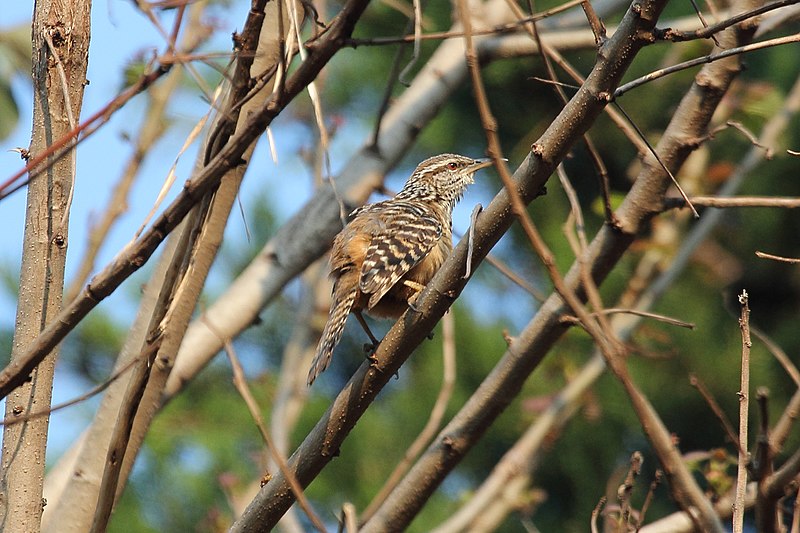
The Band-backed Wren is a small songbird of the wren family, found in five disjunct areas from south-central Gulf Coast Mexico to northwestern Ecuador.
This species is a resident breeding bird that typically inhabits tropical forests and woodlands near rivers.
It has two black stripes on its back, the namesake “band,” separating brown dorsal plumage with white spots along its sides; their chest color can vary from greyish to buffy yellow depending on location.
Its diet consists mostly of insects and other invertebrates, as well as some fruits when available.
The male usually sings during dawn and dusk hours while perched atop branches or vines in order to attract mates for reproduction purposes which typically occurs between August – March throughout Central America and South America.
Scientific classification:
| Kingdom | Animalia |
| Phylum | Chordata |
| Class | Aves |
| Order | Passeriformes |
| Family | Troglodytidae |
| Genus | Campylorhynchus |
| Species | C. zonatus |
Also Featured In: Birds that You’ll Find in Chiapas,
28. Northern Potoo
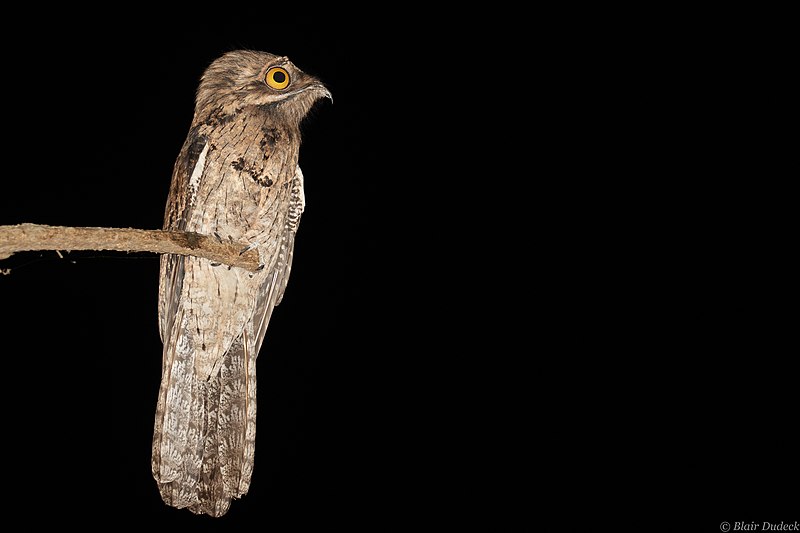
The Northern Potoo is a nocturnal bird belonging to the Nyctibiidae family. It inhabits Mexico, Central America and some of the Caribbean Islands such as Jamaica and Hispaniola where it can be found in tropical dry forests.
It was formerly classified as a subspecies of Common Potoo but due to differences in vocalizations they are now considered separate species.
This interesting bird has an almost comical appearance with its large head, long bill, short neck and disproportionately long legs that give it an awkward gait when walking on land.
Its plumage is mottled grey-brown which helps camouflage itself during the day while perched motionless on tree branches looking for prey at night.
The Northern Potoos call consists mostly or whistles ending with trills making them quite easy to identify within their range area.
Scientific classification:
| Kingdom | Animalia |
| Phylum | Chordata |
| Class | Aves |
| Order | Nyctibiiformes |
| Family | Nyctibiidae |
| Genus | Nyctibius |
| Species | N. jamaicensis |
29. Spot-Breasted Oriole
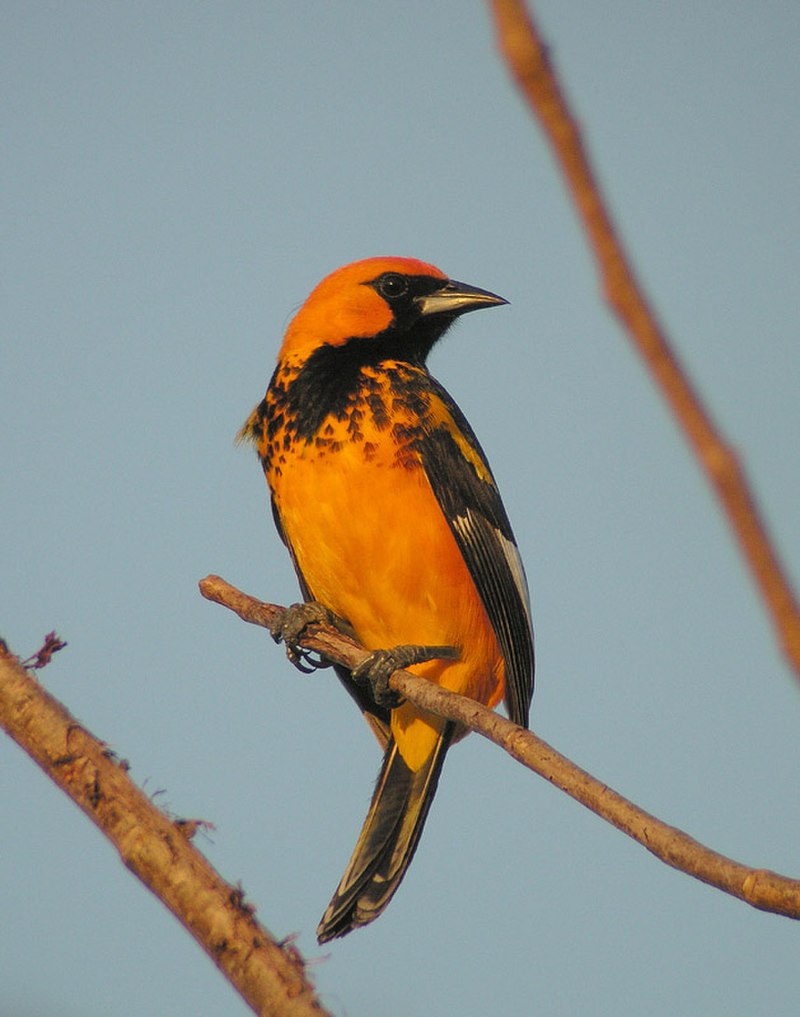
The Spot-breasted Oriole is a stunningly beautiful bird, with its bright orange feathers and black bib. It can be found in Central America from Mexico to Panama, including much of the Caribbean region.
The male and female share similar plumage; however, females are olive green on their back and tail instead of orange like males. Juveniles lack most or all of the black coloring on their face and throat too.
This mid-sized songbird loves open woodlands near water sources such as rivers or streams where it can feed off insects for sustenance. Its distinctive call also makes it easy to spot if you’re out looking for birds.
Scientific classification:
| Kingdom | Animalia |
| Phylum | Chordata |
| Class | Aves |
| Order | Passeriformes |
| Family | Icteridae |
| Genus | Icterus |
| Species | I. pectoralis |
30. Bushy-Crested Jay
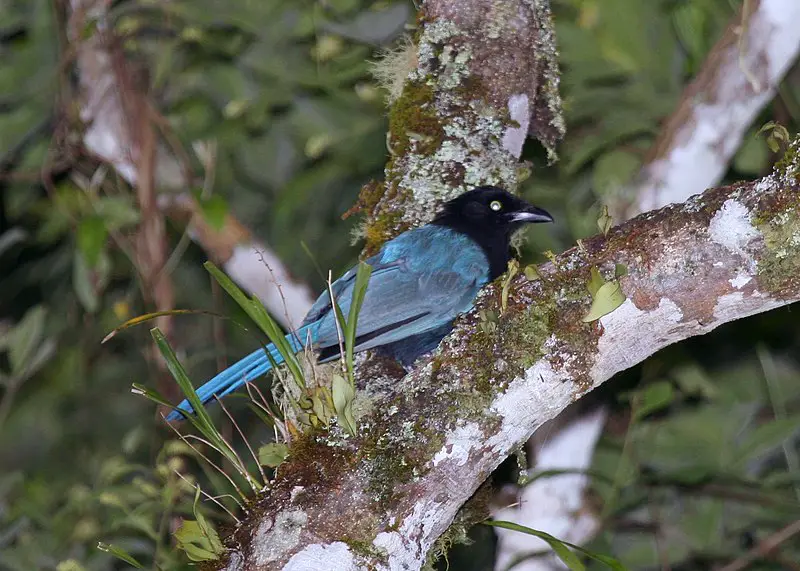
The Bushy-crested Jay is a species of bird found in Central America. It has two distinct subspecies, C. m. melanocyaneus located in Guatemala and El Salvador, and C.
m. chavezi which can be seen from Honduras to northeastern Nicaragua . This jay prefers moist montane forests or degraded former forest habitats as their home range .
They have an overall blue plumage with light gray underparts while the crest on its head is chestnut brown that contrasts greatly against its otherwise colored body.
The tail feathers are often barred black and white , giving it a unique look amongst other birds of similar size and coloration .
Their diet consists mostly of insects but they’ve been known to feed on fruits as well when available leading them to becoming seed dispersers for certain plant life throughout their habitat area.
All in all this species remains relatively common even though there may be some localized threats present due to deforestation activity happening within parts of Central America at times.
Scientific classification:
| Kingdom | Animalia |
| Phylum | Chordata |
| Class | Aves |
| Order | Passeriformes |
| Family | Corvidae |
| Genus | Cyanocorax |
| Species | C. melanocyaneus |
31. Fulvous Owl
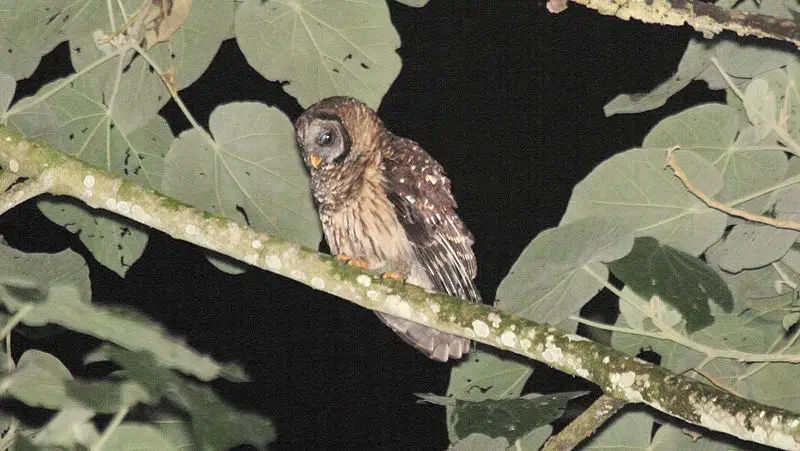
The Fulvous Owl is a medium-sized bird of prey found in the cloud forests of Central America.
It has a round head, with no ear tufts and warm dark or reddish brown coloring on its back that becomes lighter towards its front which also shows darker barring.
An adult owl usually weighs around 600 grams, females being slightly heavier than males.
Its range stretches from Mexico to Panama but it prefers mountainous terrain where it can find plenty of food such as small mammals and insects – the staple diet for most owls.
This species may be overshadowed by larger more famous members of the family, however this does not diminish their importance within their own ecosystem.
Scientific classification:
| Kingdom | Animalia |
| Phylum | Chordata |
| Class | Aves |
| Order | Strigiformes |
| Family | Strigidae |
| Genus | Strix |
| Species | S. fulvescens |
32. Amethyst-Throated Mountaingem
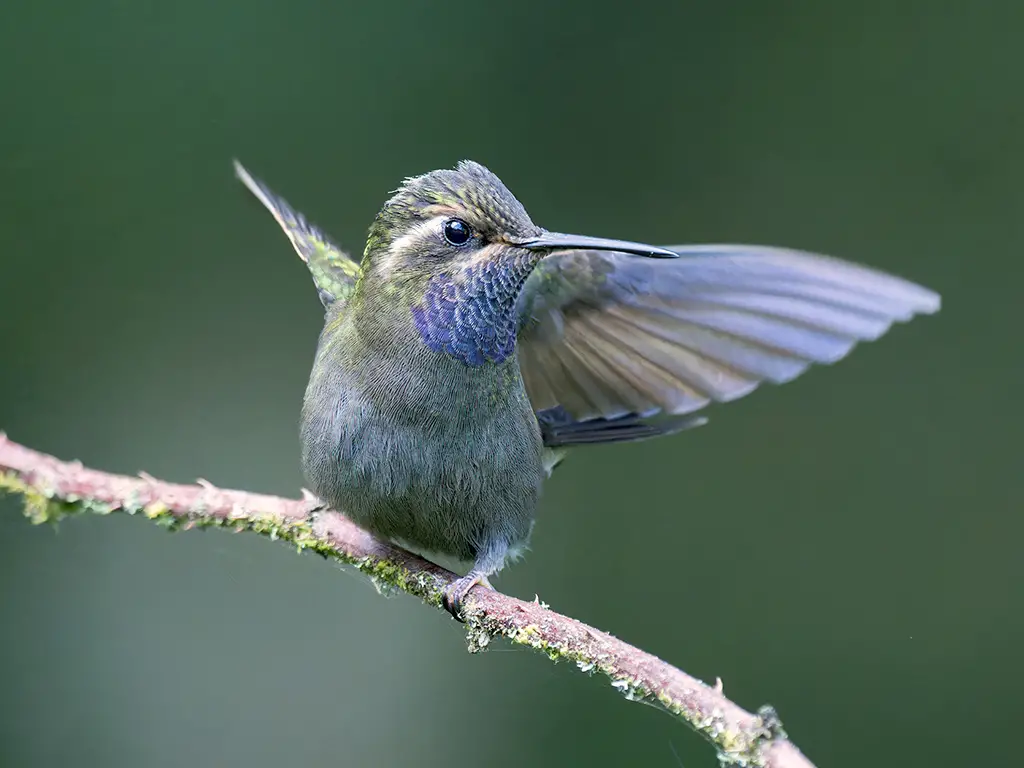
The Amethyst-throated Mountaingem is a species of hummingbird that can be found in El Salvador, Guatemala, Honduras and Mexico.
It has five subspecies and it’s size ranges from 11.5 to 12.5 cm long with males typically being larger than the females.
They have green upper parts with patches of blue on their back as well as an amethyst colored throat patch which gives them their name.
These birds are nectarivores meaning they feed mainly on flower nectar supplemented by small insects like spiders or other invertebrates caught while hovering over foliage or flying low near vegetation in search for food sources such as flowers or fruits offering high energy content items like agave syrup produced by some types of cacti during blooming season.
Scientific classification:
| Kingdom | Animalia |
| Phylum | Chordata |
| Class | Aves |
| Order | Apodiformes |
| Family | Trochilidae |
| Genus | Lampornis |
| Species | L. amethystinus |
Also Featured In: Most Common Oaxaca Birds,
33. Belted Flycatcher
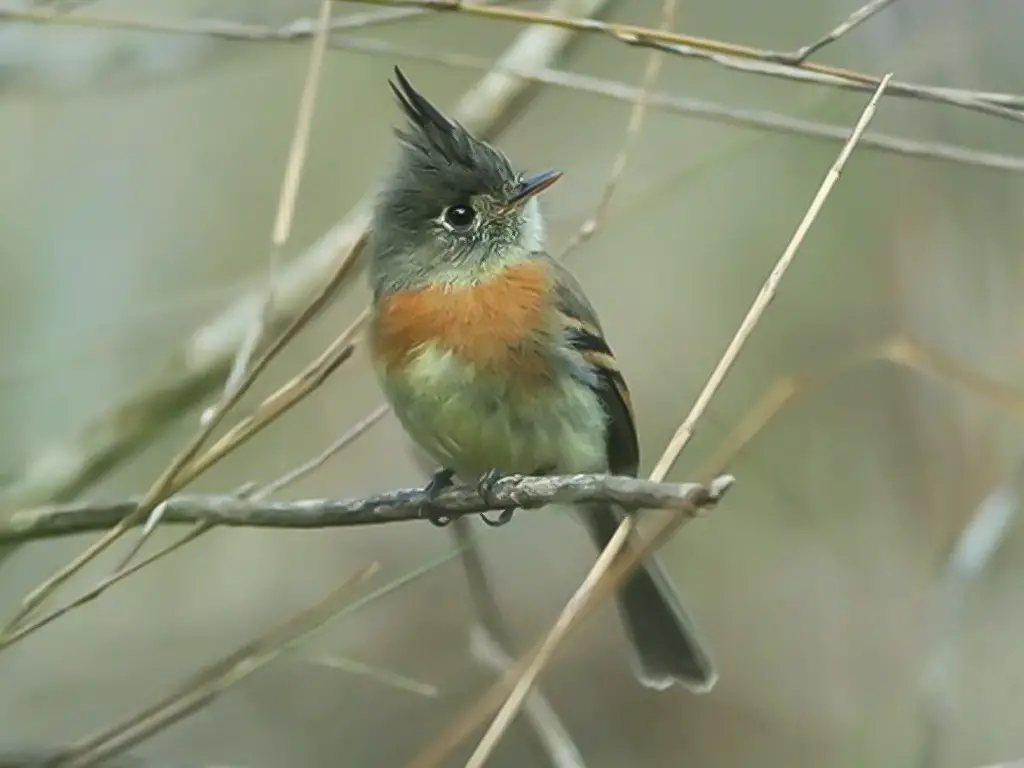
The belted flycatcher is a species of bird found in southern Mexico, Guatemala and El Salvador. It has a relatively dull appearance with light brown upperparts and dull yellow underparts.
Its crest is the most colourful feature, as it stands out against its muted colours; other features include pale eye-rings, cocoa coloured wing bars and chest bands.
Unfortunately this species is threatened by habitat loss due to human activity such as deforestation.
Therefore conservation efforts are needed to ensure that these birds can continue living in their native habitats for years to come.
Scientific classification:
| Kingdom | Animalia |
| Phylum | Chordata |
| Class | Aves |
| Order | Passeriformes |
| Family | Tyrannidae |
| Genus | Xenotriccus |
| Species | X. callizonus |
34. Golden-Olive Woodpecker
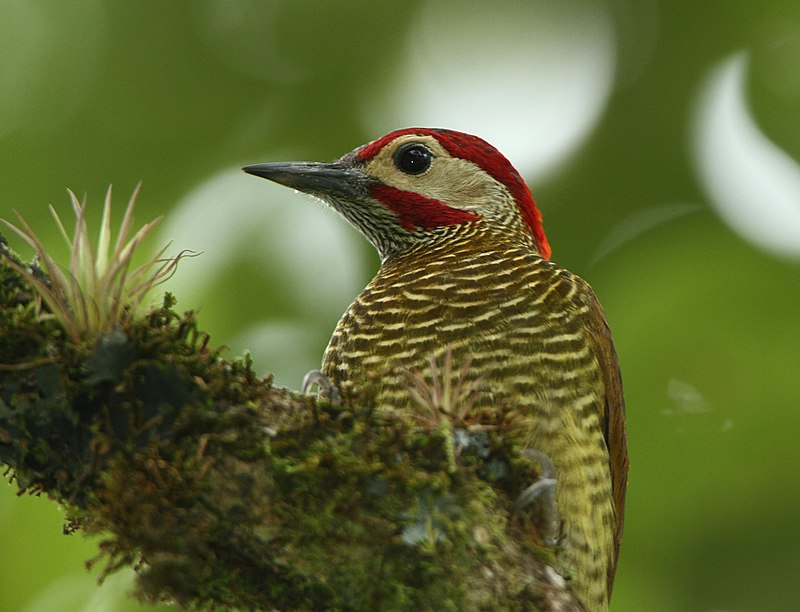
The Golden-olive Woodpecker is a colorful bird native to Mexico, Guyana, Argentina and Trinidad & Tobago. It can be recognized by its rust-colored wings and back as well as its bright yellow throat.
This species of woodpecker measures about 20 cm in length with an average weight between 25 – 36 grams. Its diet consists mainly of insects but it also feeds on fruits such as figs or berries when available.
The birds usually make their nests in tree cavities where they lay two to five eggs at once which are incubated for 11–14 days before hatching.
These woodpeckers have been observed living up to 8 years old in the wild making them quite long lived compared to many other species.
Scientific classification:
| Kingdom | Animalia |
| Phylum | Chordata |
| Class | Aves |
| Order | Piciformes |
| Family | Picidae |
| Genus | Colaptes |
| Species | C. rubiginosus |
Also Featured In: Most Common Birds of Nuevo Leon,
35. Spot-Crowned Woodcreeper
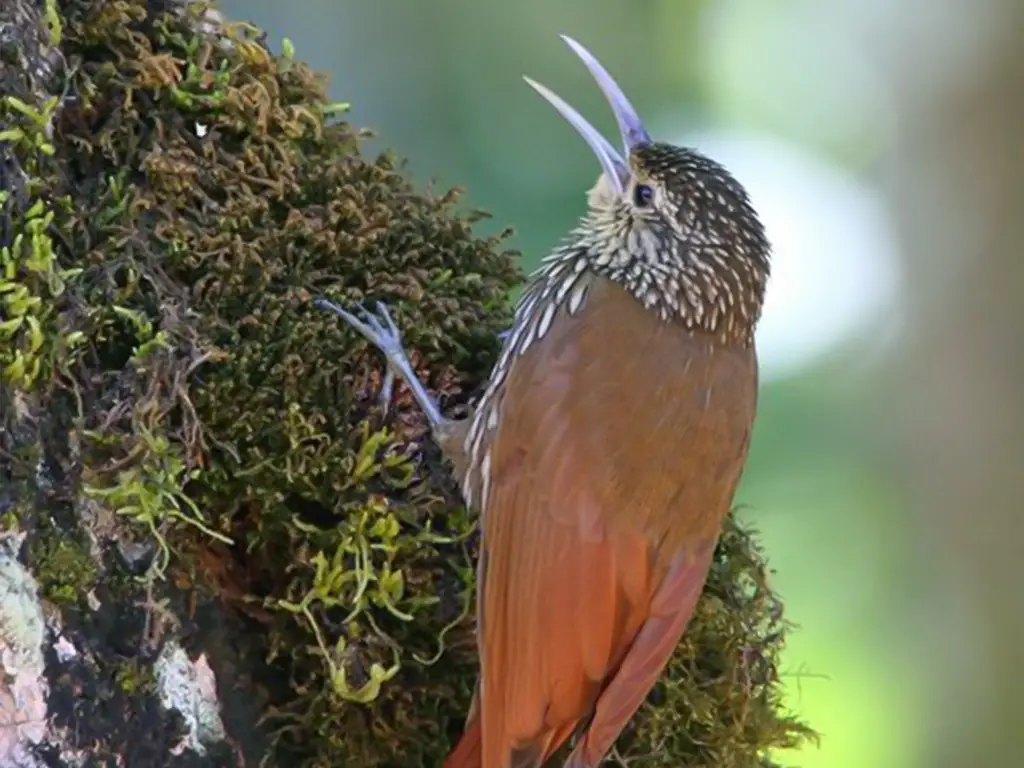
The Spot-crowned woodcreeper is a medium sized passerine bird that can be found in the tropical New World from central Mexico to northern Panama.
It has an olive brown upperparts and wings with fine streaking on its back, as well as a spotted crown and chestnut rump.
On average it measures 21.5 cm (8.5 inches) long and weighs 35 g (1.2 oz). Its diet mainly consists of insects which it forages from tree trunks by clinging vertically or even upside down.
They are usually seen alone or occasionally in pairs during breeding season but will form small flocks when migrating southwards for winter months.
Scientific classification:
| Kingdom | Animalia |
| Phylum | Chordata |
| Class | Aves |
| Order | Passeriformes |
| Family | Furnariidae |
| Genus | Lepidocolaptes |
| Species | L. affinis |
36. White-Eared Ground Sparrow
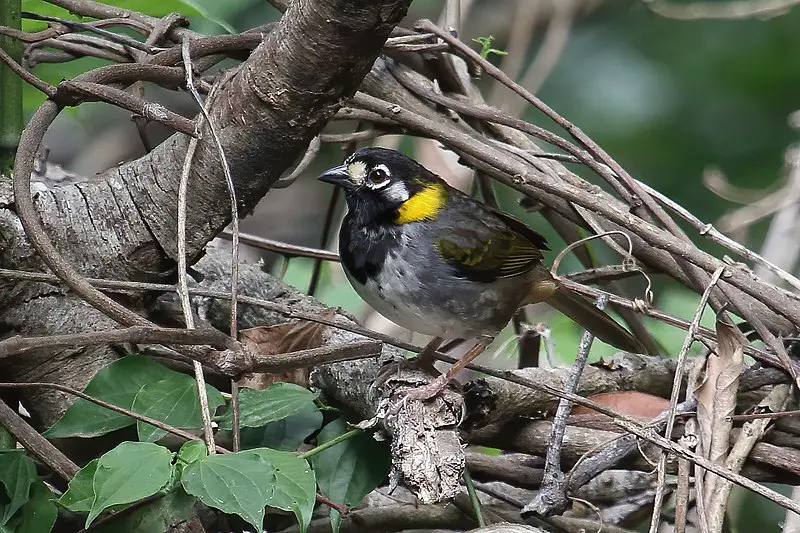
The White-eared Ground Sparrow is a large American sparrow found in Middle America, mostly on foothills from southern Mexico and Guatemala to northern Costa Rica.
It loves semi-open woodland including second growth forests and thickets of ravines as well as forest edges at altitudes between 500 to 2,000 m (1,600 – 6,600 ft).
Its plumage is brownish grey with white spots over its wings while the head has a distinctive black mask next to its white eyebrows.
The White-eared Ground Sparrow feeds mainly on grasshoppers and other insects but also eats some grains such as maize or rice too.
They are fairly common birds that live in flocks though they can be shy when disturbed by humans or predators like hawks or cats.
Scientific classification:
| Kingdom | Animalia |
| Phylum | Chordata |
| Class | Aves |
| Order | Passeriformes |
| Family | Passerellidae |
| Genus | Melozone |
| Species | M. leucotis |
37. Whiskered Screech Owl
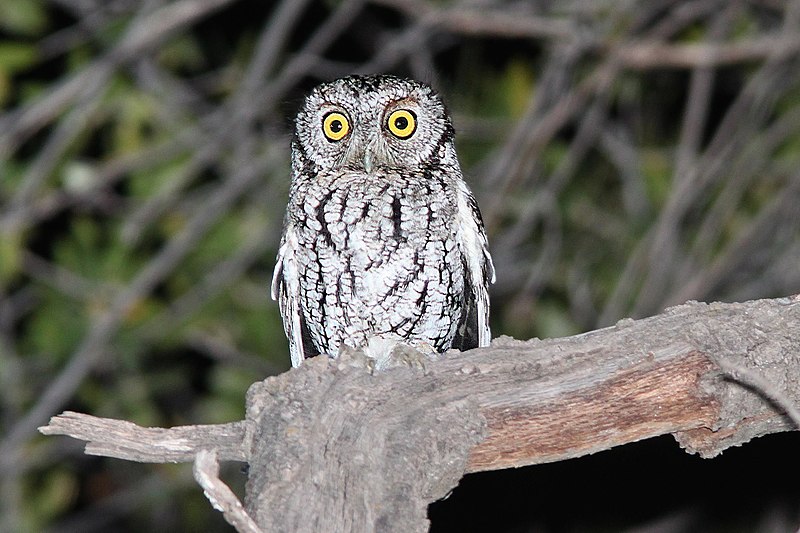
The Whiskered screech owl is a beautiful and unique species of small owls found in North and Central America.
It has two color morphs, brown or dark grey plumage with heavy barring on the breast, that makes it look very similar to a western screech owl but slightly smaller in size.
This bird has an impressive round head adorned by ear tufts, yellow eyes, and a yellowish bill. An adult whiskered screech owl measures 6.3 to 7.9 inches long from head to tail making them one of the smallest species of owls around.
They are incredible little creatures that should be appreciated for their beauty as well as their amazing natural abilities such as flying silently through the night skies while hunting for food without being noticed.
Scientific classification:
| Kingdom | Animalia |
| Phylum | Chordata |
| Class | Aves |
| Order | Strigiformes |
| Family | Strigidae |
| Genus | Megascops |
| Species | M. trichopsis |
Also Featured In: Most Common Birds in Michoacán,
38. Blue Grosbeak
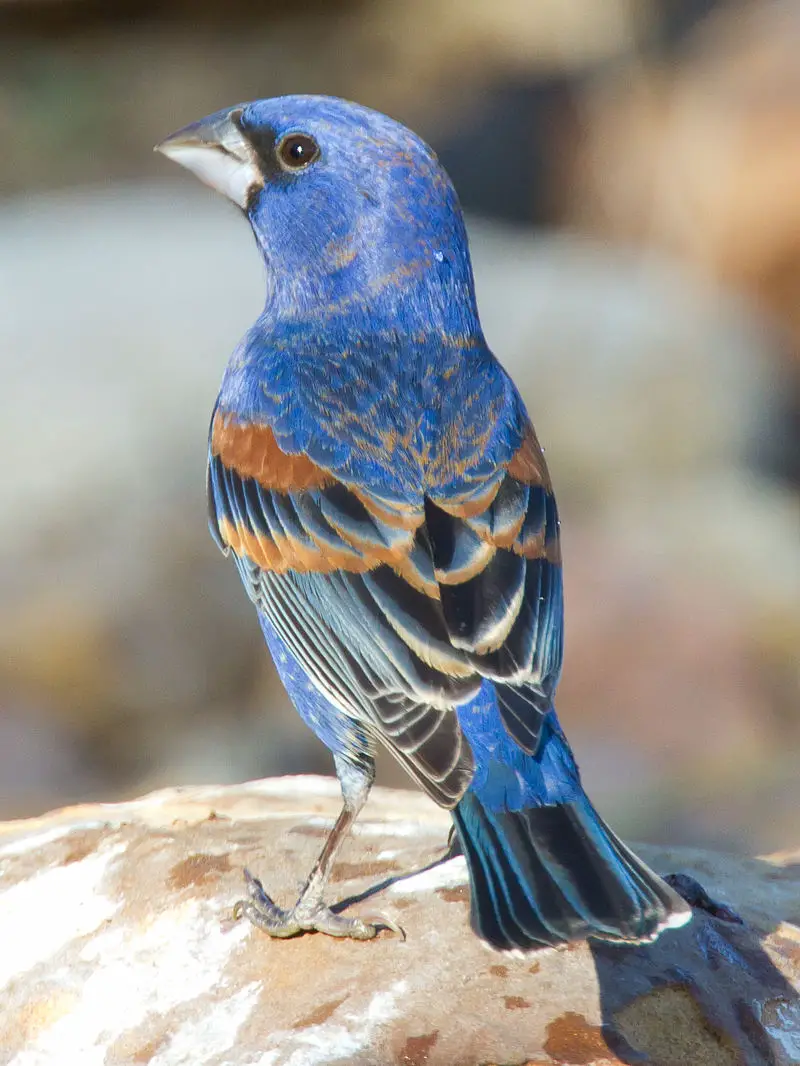
The Blue Grosbeak is a medium-sized North American passerine bird from the Cardinalidae family. It has striking plumage, with males showing off an impressive blue coloration and two brown wing bars.
Females are mainly brown with scattered blue feathers on the upperparts, but they also have two brown wing bars like males do.
During summer months these birds can be found in northern Mexico and southern United States where they breed, while during wintertime it migrates to Central America for resting purposes.
This beautiful species of bird is easy to spot due its vibrant colors making it a popular sight amongst wildlife observers.
Scientific classification:
| Kingdom | Animalia |
| Phylum | Chordata |
| Class | Aves |
| Order | Passeriformes |
| Family | Cardinalidae |
| Genus | Passerina |
| Species | P. caerulea |
Also Featured In: Blue Birds You’ll Found around Us, Summer Birds that Live around Us
39. White-Bellied Chachalaca
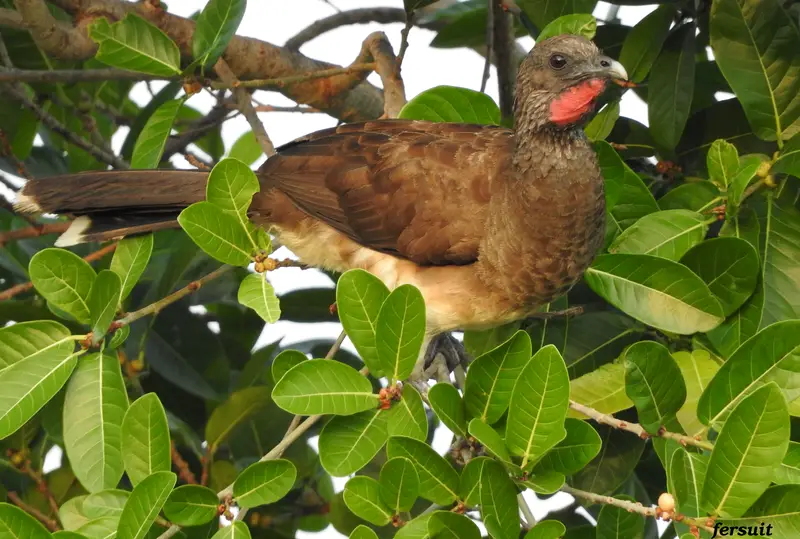
The White-bellied Chachalaca is a species of bird native to Central America. It belongs to the Cracidae family, which includes guans, curassows and chachalacas.
Its range extends from El Salvador through Guatemala, Honduras, Mexico and Nicaragua.
This robustly built bird was once believed to be a subspecies of Plain Chachalaca (Ortalis vetula), but recent genetic studies have shown that it is most closely related to Speckled Chachalaca (O. guttata).
The White-bellied Chachala’s plumage mainly consists of grayish brown on its back with reddish barring around wings; its belly is predominantly white giving this species its name.
They are usually found in pairs or small flocks foraging in tree canopies searching for fruits and insects as their main food source.
Scientific classification:
| Kingdom | Animalia |
| Phylum | Chordata |
| Class | Aves |
| Order | Galliformes |
| Family | Cracidae |
| Genus | Ortalis |
| Species | O. leucogastra |
40. Bar-Winged Oriole
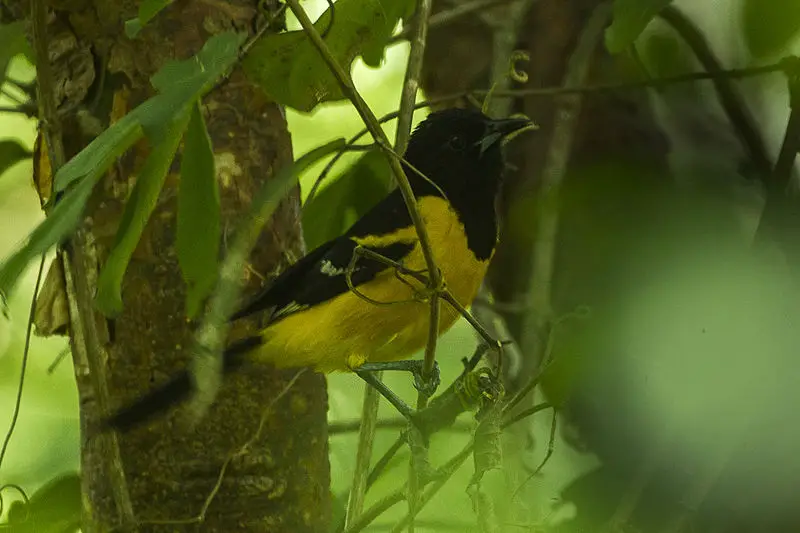
The Bar-winged oriole is a beautiful bird found in El Salvador, Guatemala, Honduras and Mexico.
It has distinctive black wings with white bars running across them from shoulder to tail feathers.
This species of bird prefers subtropical or tropical moist montane forests as its natural habitat but it can also be seen living in heavily degraded former forest areas too.
Its diet consists mainly of insects such as beetles and caterpillars which it finds on tree trunks and branches.
The Bar-winged oriole is an active forager that spends most days searching for food among the trees before returning to roost at nightfall.
Overall this lovely species adds beauty to these regions while helping maintain balance within their ecosystems by preying upon insect pests.
Scientific classification:
| Kingdom | Animalia |
| Phylum | Chordata |
| Class | Aves |
| Order | Passeriformes |
| Family | Icteridae |
| Genus | Icterus |
| Species | I. maculialatus |
41. Prevost’s Ground Sparrow
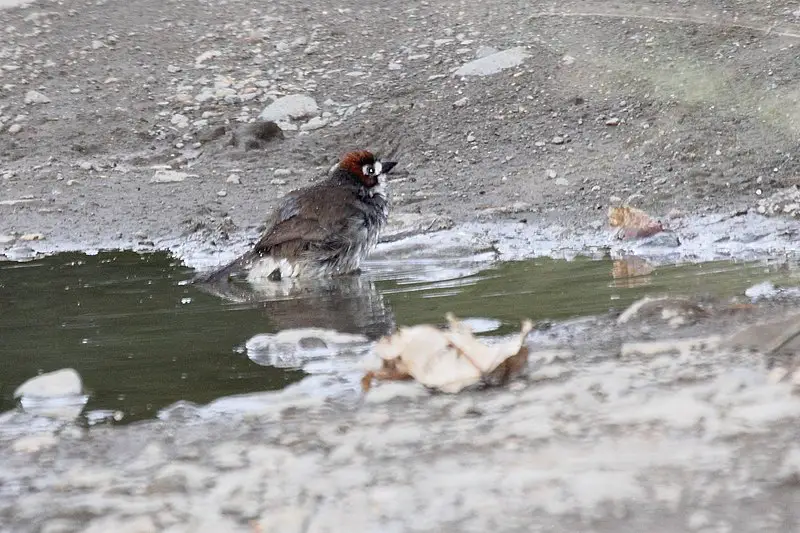
Prevost’s Ground Sparrow is an American sparrow, named after the French naturalist Florent Prévost.
It breeds at middle altitudes from southern Mexico to western Honduras, usually between 600 and 1600 meters in the undergrowth of mountain forests.
This bird has a distinctive white face patch with black stripe running through it along its beak line.
The upperparts are greyish brown while the breast and flanks are heavily streaked with dark markings which extend down onto its belly.
Its tail feathers have broad pale edges and there is some light barring on their wings too.
These birds feed mainly on insects but will also eat seeds as well as fruits or berries when available during winter months.
Scientific classification:
| Kingdom | Animalia |
| Phylum | Chordata |
| Class | Aves |
| Order | Passeriformes |
| Family | Passerellidae |
| Genus | Melozone |
| Species | M. biarcuata |
42. Stripe-Headed Sparrow
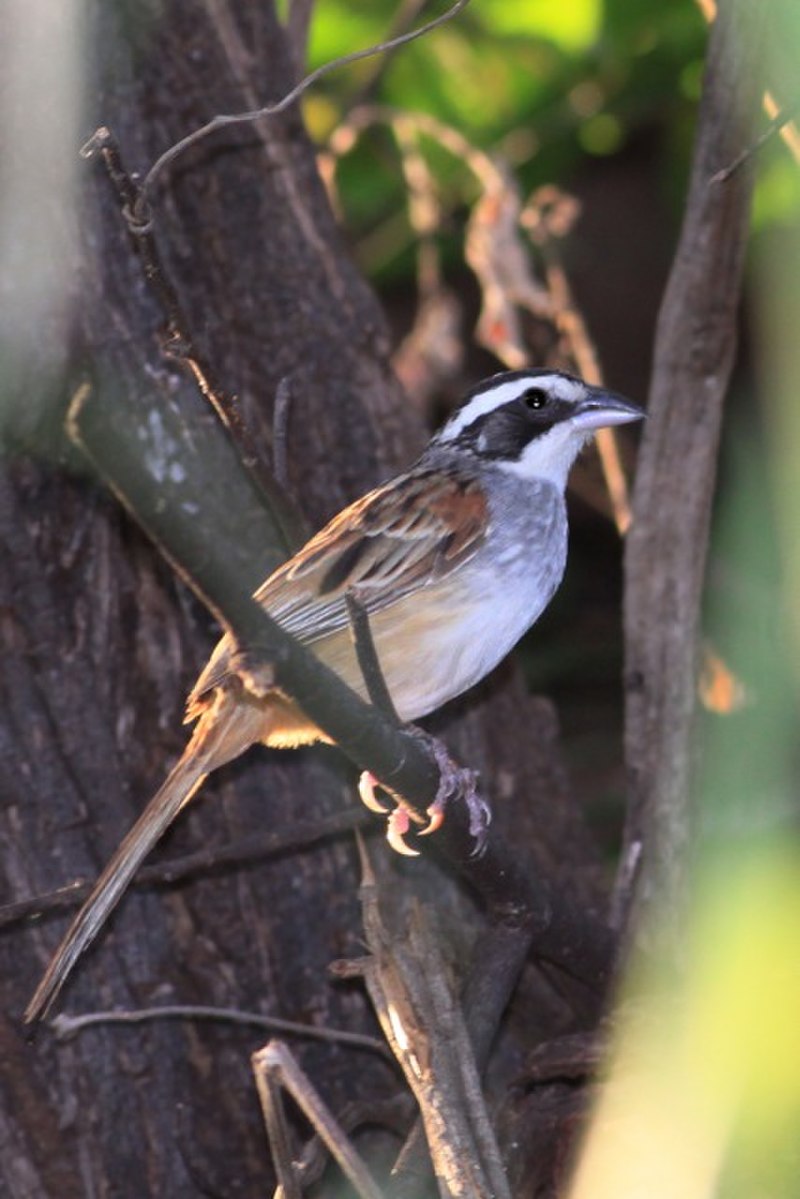
The Stripe-headed Sparrow is an American bird that breeds in the Pacific coastal south-western Mexico and northern Costa Rica.
It prefers to live in savannahs, scrubby areas, and lowlands up to 1,800 m (5,900 ft) in altitude.
They are quite common birds with a distinct look; they have white stripes on their heads which helps them stand out from other species of sparrows.
The rest of its body is mostly greyish brown or tan with dark brown streaks along its back as well as some yellow feathers around the face area for further distinction.
These birds feed mainly on grasses and grains but also enjoy insects such as beetles whenever possible.
All in all these small yet beautiful creatures make for lovely additions to any backyard or outdoor space you may have.
Scientific classification:
| Kingdom | Animalia |
| Phylum | Chordata |
| Class | Aves |
| Order | Passeriformes |
| Family | Passerellidae |
| Genus | Peucaea |
| Species | P. ruficauda |
Also Featured In: Puerto Vallarta Birds You Should Know,
43. Berylline Hummingbird
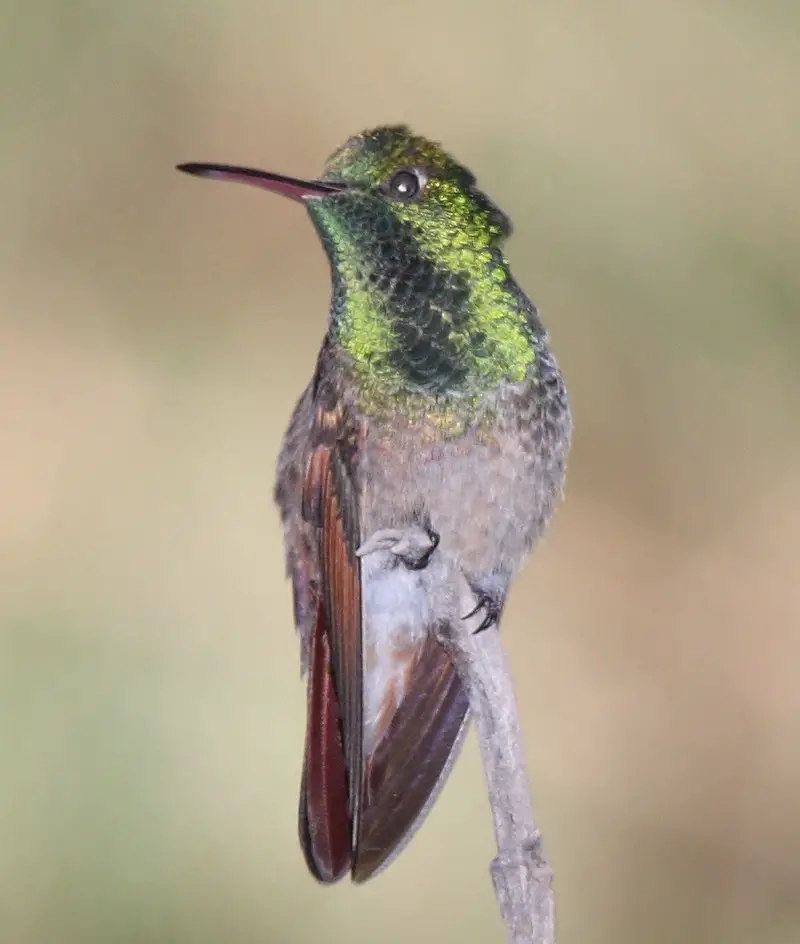
The Berylline Hummingbird is a vibrant species of hummingbird found in Central America and the United States.
It has emerald green upperparts, rufous sides and underparts, white tips to its tail feathers, as well as an iridescent purple throat patch.
These birds are highly territorial and will defend their territories against intruders with impressive aerial displays.
They feed on nectar from flowers such as bromeliads, columbines or agaves while searching for insects which they catch mid-air by hovering near foliage or flying low over meadows.
The Berylline Hummingbird is considered a Least Concern species due to its wide distribution range but it faces threats from habitat loss caused by urbanization and farming practices that reduce suitable nesting sites available for this bird.
Scientific classification:
| Kingdom | Animalia |
| Phylum | Chordata |
| Class | Aves |
| Order | Apodiformes |
| Family | Trochilidae |
| Genus | Saucerottia |
| Species | S. beryllina |